Advertisement
Supported by

What Made Him Tick
- Share full article
By George Johnson
- June 28, 2013
By the time I was 300 pages into Ray Monk’s formidable biography of J. Robert Oppenheimer, I couldn’t imagine why anyone in his right mind would have chosen this man as director of the secret laboratory that built the first atomic bomb. If the whole thing had failed, what a harebrained scheme it would have seemed.
True enough, Oppenheimer had established himself as a brilliant theoretical physicist, even if his mathematics, by the standards of his profession, was considered a little sloppy. While he had applied the new quantum theory to solve some important problems, his contributions paled alongside those of Paul Dirac and other wunderkinder. Far from being a team player, he was a loner and an elitist, as Monk recounts in “Robert Oppenheimer: A Life Inside the Center,” expressing his ideas in the most oblique, Delphic terms.
Charming one moment, caustic the next, he still carried, at age 38, the markings of a spoiled, impetuous rich kid whose depressive behavior occasionally swung toward the erratic. There were times when he even seemed crazy. During a year abroad from Harvard to study at Cambridge University, Oppenheimer confessed to putting a poisoned apple on his tutor’s desk. The truth of the matter remains murky, but it was serious enough that Oppenheimer’s father intervened with university officials, promising his son would keep regular appointments with a London psychiatrist. When the school term ended the boy was taken away by his parents on a “recuperative holiday” to France, where, in Paris, he locked his mother in a hotel room.
This recklessness didn’t end entirely with his student days. As a young professor in California, he crashed his car while racing a train, an accident that left his girlfriend unconscious. His father made amends by giving the young woman a painting and a Cézanne drawing.
By the time Brig. Gen. Leslie Groves was seeking a director for the bomb laboratory, Oppenheimer had gained the respect of the world’s most eminent physicists, and he had attracted a coterie of admiring students. But he seemed aloof and lost in abstractions, pretentiously interjecting among his equations riffs from French literature or the Upanishads. And while hardly a threat to American security, Oppenheimer appears to have been as close as a person can get to being a supporter of the Communist Party without actually carrying a membership card.
As soon as Groves met the young scientist, none of that mattered. In a meeting at Berkeley, he impressed the general with the breadth of his knowledge and, of all things, what Groves saw as his practicality. More than any other scientist the general had talked to, Oppenheimer appeared to understand what had to be done to go from abstract theories and laboratory experiments to the making of a nuclear bomb.
This was not just a physics problem. It would be an unparalleled feat of engineering, and one that must progress while basic theoretical problems were still being solved. There was no place better to do this, Oppenheimer believed, than outside the universities — in a remote, central laboratory. He didn’t object to the idea that the operation be overseen by the military. Oppenheimer, as Monk observes, seemed to have had “an unerring sense of what Groves wished to hear.”
Groves may have also seen in Oppenheimer a man driven far less by ideology than by ambition, whose need to be an important player ensured that anything he directed would be a success.

History, of course, has vindicated the decision. The brooding introvert became a leader, harnessing the efforts of a headstrong cast of brilliant physicists for an all-but-impossible task: assembling on a barely accessible New Mexico mesa top — an unlikely spot Oppenheimer had discovered on a vacation horseback ride — not just an advanced nuclear laboratory but a whole town. While he worked, he remained under surveillance, just in case Groves had misjudged him and he turned out to be a Soviet spy.
It is an extraordinary story, and Monk — the author of acclaimed biographies of Bertrand Russell and Ludwig Wittgenstein — tells it well. Other major biographies have been published in recent years: David C. Cassidy’s “J. Robert Oppenheimer and the American Century” is especially strong on the science, and Monk acknowledges Kai Bird and Martin J. Sherwin’s groundbreaking “American Prometheus: The Triumph and Tragedy of J. Robert Oppenheimer” as an important source for his own research. Monk (who reviewed one of my early books) says in his preface that his aim is to produce “an internal rather than an external biography,” one that gets deeper into Oppenheimer’s psychological complexity and that ties his contributions to physics more firmly into his life.
The result is an impressive work that stands as a strong challenger to other contenders. But I’m not sure it has brought us that much closer to the man. The details of Oppenheimer’s physics, though laid out clearly, reveal little about his perplexing psyche. While his childhood is neatly drawn — the privileged son of nonobservant German Jews and a product of the private Ethical Culture School in New York — we learn almost nothing about his mess of a marriage or his distant relationship with his children. Bird and Sherwin’s book is more vivid on that ground.
Whatever Oppenheimer did to so thoroughly impress Groves and to motivate the scientists at Los Alamos doesn’t really come across here or in anything else I’ve read. What made him so inspiring, so indispensable? It almost seems as if he had everyone hypnotized.
But when the war was over, the spell was broken. Now the enemy was the Soviet Union, and Oppenheimer’s calls for avoiding a thermonuclear showdown by sharing technology and holding back on the hydrogen bomb were used by his opponents to mark him as a Red. His past indiscretions gave them plenty of ammunition.
During his directorship he had lied to a military intelligence officer. Pressured by Groves, he named old friends who had been Communists, including his own brother, Frank. There was almost no end to what he would do to protect his position — he so loved being an insider. Yet such was his carelessness that, knowing he was under close watch, he spent a night in San Francisco with an old girlfriend and party member, Jean Tatlock.
After the war came the legendary security hearings — what a government lawyer reviewing the case later called “a punitive, personal abuse of the judicial system.” No evidence came out that he had engaged in espionage. An Atomic Energy Commission personnel board concluded he was a loyal citizen. But he was not above suspicion. That was enough for them to strip him of his security clearance.
Maybe that would have been a defensible reason back in 1942 not to choose him to lead the Los Alamos project, though it would have been a mistake. Now it was just an empty vendetta.
An authority on self-destructive behavior, Oppenheimer memorably described the United States and the Soviet Union as “two scorpions in a bottle, each capable of killing the other, but only at the risk of his own life.” He was himself the casualty of scorpions fighting each other in Washington. And of the scorpions that remained corked tightly in Oppenheimer’s mind.
ROBERT OPPENHEIMER
A life inside the center.
By Ray Monk
Illustrated. 825 pp. Doubleday. $37.50.
George Johnson is the author of “Strange Beauty,” a biography of the physicist Murray Gell-Mann. His book “The Cancer Chronicles: Unlocking Medicine’s Deepest Mystery” will be published in August.
Explore More in Books
Want to know about the best books to read and the latest news start here..
Stephen King, who has dominated horror fiction for decades , published his first novel, “Carrie,” in 1974. Margaret Atwood explains the book’s enduring appeal .
The actress Rebel Wilson, known for roles in the “Pitch Perfect” movies, gets vulnerable about her weight loss, sexuality and money in her new memoir.
“City in Ruins” is the third novel in Don Winslow’s Danny Ryan trilogy and, he says, his last book. He’s retiring in part to invest more time into political activism .
Jonathan Haidt, the social psychologist and author of “The Anxious Generation,” is “wildly optimistic” about Gen Z. Here’s why .
Do you want to be a better reader? Here’s some helpful advice to show you how to get the most out of your literary endeavor .
Each week, top authors and critics join the Book Review’s podcast to talk about the latest news in the literary world. Listen here .
- Entertainment
- Here’s How Faithfully <i>Oppenheimer</i> Captures Its Subject’s Real Life
Here’s How Faithfully Oppenheimer Captures Its Subject’s Real Life
A fter months of building anticipation, writer-director Christopher Nolan’s new movie Oppenheimer arrived in theaters Friday, kickstarting an opening weekend where it’s expected to collect around $50 million at the domestic box office.
The three-hour ( and nine second ) biopic centers, as its title suggests, on J. Robert Oppenheimer (played by Cillian Murphy), the theoretical physicist widely known as the “father of the atomic bomb” who infamously summed up his life’s work in a 1965 NBC News documentary by reciting a line from the sacred Hindu text the Bhagavad Gita: “Now I am become death, the destroyer of worlds.”
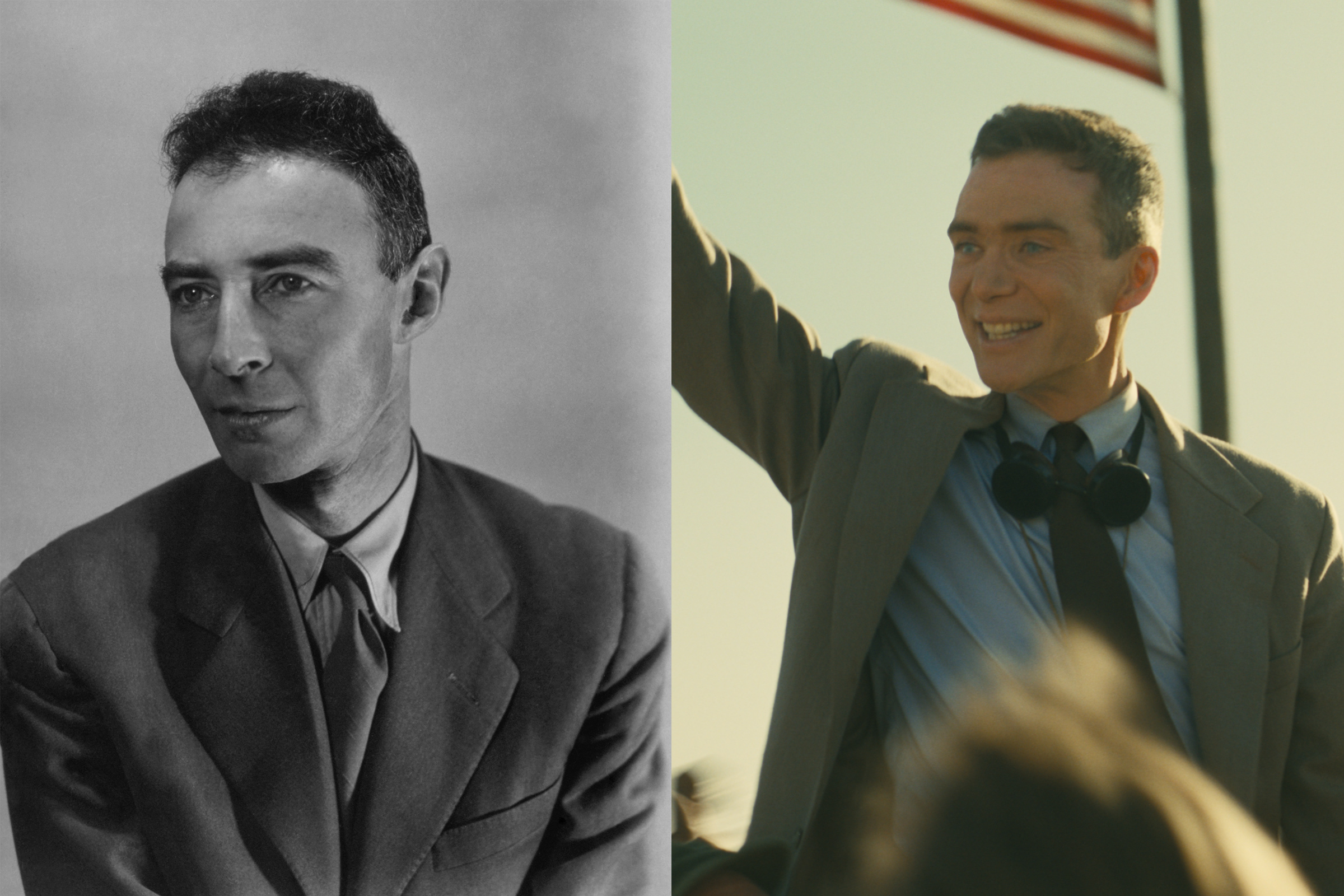
Based on Kai Bird and Martin J. Sherwin’s Pulitzer Prize-winning 2006 biography American Prometheus: The Triumph and Tragedy of J. Robert Oppenheimer — currently no. 1 on Amazon’s bestseller chart , thanks to the film — the movie jumps back and forth through time as it explores the life and legacy of its subject. “What I wanted to do was take the audience into the mind and the experience of a person who sat at the absolute center of the largest shift in history,” Nolan said in the film’s production notes. “Like it or not, J. Robert Oppenheimer is the most important person who ever lived. He made the world we live in, for better or for worse.”
Here’s what to know about how the true story of Oppenheimer’s life compares to the movie.
Read More: Oppenheimer Dazzles With Its Epic Story of a Complicated Patriot
Oppenheimer’s early life
Oppenheimer’s childhood doesn’t play out on screen in the movie, but his upbringing contributed to views he espouses throughout the film. He was born in 1904 into a wealthy secular Jewish family in New York City and educated at Manhattan’s Ethical Culture School, graduating in 1921. Although his parents were first- and second-generation Americans of German-Jewish descent, Oppenheimer refrained from embracing his heritage for much of his life.
“To the outside world, he was always known as a German Jew, and he always insisted that he was neither German nor Jewish,” Ray Monk, the author of Robert Oppenheimer: A Life Inside the Center , told the Jewish Telegraphic Agency . “But it affected his relationship with the world that that is how he was perceived.”
Antisemitism impacted him throughout his time studying at Harvard, and later, amid the Nazis’ rise to power in Germany, changed the way he engaged with his Jewishness.
“I had a continuing, smoldering fury about the treatment of Jews in Germany,” he said at his 1954 hearing before the United States Atomic Energy Commission (AEC), which is part of the movie’s central framing device. “I had relatives there, and was later to help in extricating them and bringing them to this country.”
Years in Europe
After graduating summa cum laude from Harvard in 1925, Oppenheimer traveled to England, as the film depicts, to conduct research at the University of Cambridge’s Cavendish Laboratory under British physicist and 1906 Nobel Prize winner J. J. Thomson. There, he struggled with mental health issues and ended up on probation.
American Prometheus reports that, during this time, Oppenheimer relayed a story to friends about lacing an apple with chemicals and leaving it on the desk of his tutor, Patrick Blackett (played by James D’Arcy). The book cites Oppenheimer’s friend Jeffries Wyman as suggesting that Oppenheimer might have exaggerated the incident somehow: “Whether or not this was an imaginary apple, or a real apple, whatever it was, it was an act of jealousy.”
The way the film depicts this alleged event, Oppenheimer snatches the apple out of the hand of his idol Niels Bohr (played by Kenneth Branagh) before the legendary physicist can take a bite.

Oppenheimer ultimately transferred to the University of Göttingen in Germany, where he earned his Ph.D in quantum physics. During his time in Germany, he studied with a number of prominent physicists, including Max Born and Bohr. Oppenheimer attended Göttingen alongside Werner Heisenberg (played by Matthias Schweighöfer), who would go on to lead the German effort to develop an atomic bomb.
Ties to the Communist Party
In 1929, after returning to America, Oppenheimer accepted an assistant professorship at the University of California, Berkeley, in a special arrangement that also saw him teaching at the California Institute of Technology. Over the next 14 years, he established Berkeley as one of the greatest schools of theoretical physics in the U.S. and garnered a loyal following of up-and-coming physicists. The film depicts the program’s growth by having just one student show up to his first class, then showing the classroom bursting at the seams within a short time as word of his class spreads among students. He also worked alongside, and became good friends with, leading experimental physicist Ernest O. Lawrence (played by Josh Hartnett), who would later help involve him in the Manhattan Project.
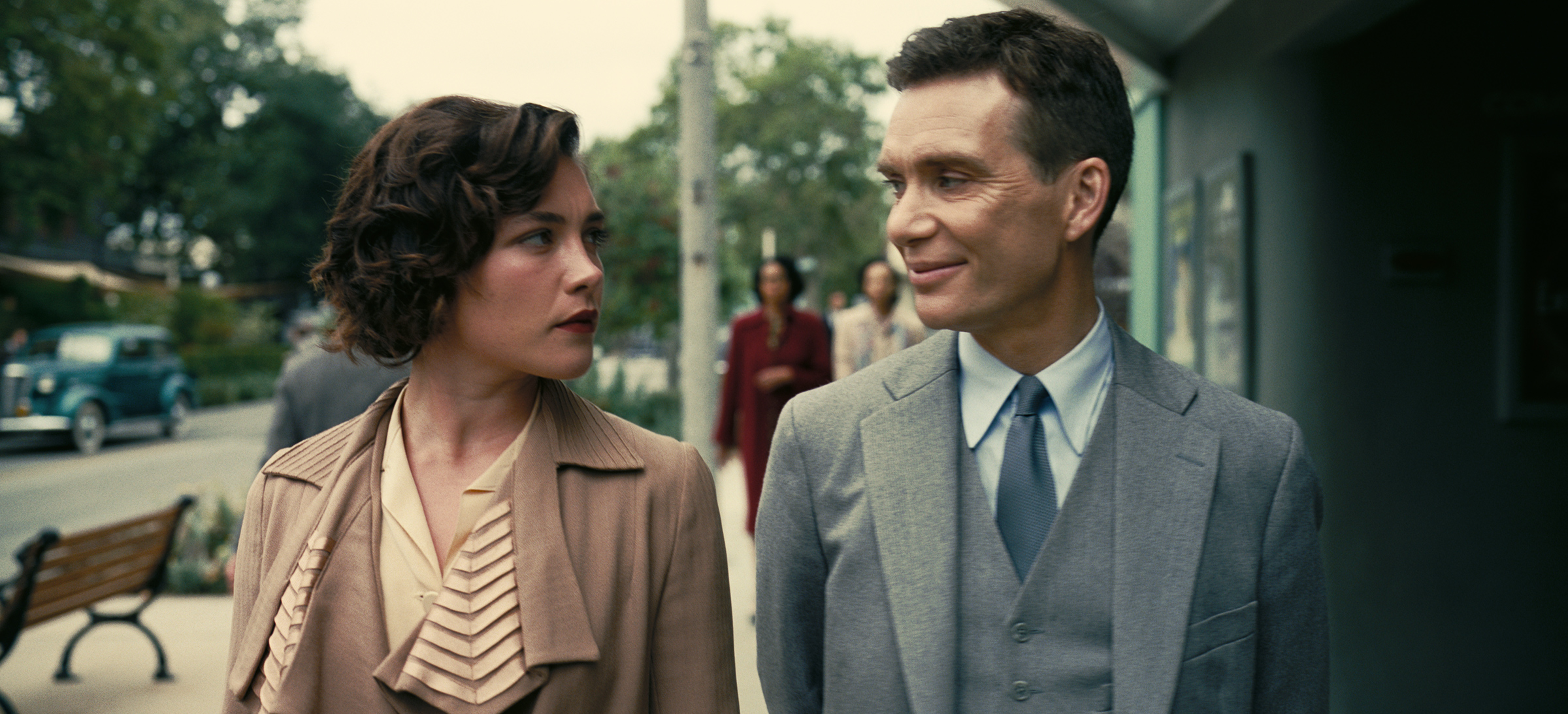
After entering into a tumultuous relationship with Stanford Medical School student and Communist Party member Jean Tatlock (played by Florence Pugh) in 1936—when she was 22 and he was 32—Oppenheimer began taking an interest in left-wing political causes, from supporting anti-fascists during the Spanish Civil War to unionizing academics. While Oppenheimer never officially joined the Communist Party, many of his closest friends and family members, including his brother Frank Oppenheimer (Dylan Arnold), friend Haakon Chevalier (Jefferson Hall), and future wife Katharine “Kitty” Puening (Emily Blunt), were members at various points in time.
The movie shows how the U.S. government was aware and skeptical of Oppenheimer’s communist affiliations early on, but chose to overlook them during the Manhattan Project when it became clear he was the right man for the job. However, these associations would ultimately come back to haunt him and lead to the destruction of his career at the height of American anti-Communist hysteria in the 1950s.
Romantic relationships
As the movie notes, over the years, Oppenheimer developed a reputation as a womanizer.
While Tatlock broke off their official relationship in 1939, Oppenheimer remained in contact with her and visited her in San Francisco, where she was working as a pediatric psychiatrist at Mount Zion Hospital, as late as 1943. That was several years into his marriage to biologist Kitty Puening.
Nearly seven months after Tatlock and Oppenheimer’s final June 1943 meeting, Tatlock’s father found his 29-year-old daughter dead in her apartment on Jan. 4, 1944. Tatlock had suffered from clinical depression and her death was ruled a suicide. However, some suspected there was foul play involved as Tatlock had been placed under surveillance by the FBI due to her relationship with Oppenheimer and past involvement with communist politics.

Oppenheimer wed the already-pregnant Puening on Nov. 1, 1940, shortly after she divorced her third husband, Richard Stewart Harrison. The Oppenheimers’ first child, Peter, was born in May 1941. Kitty later gave birth to a daughter, Katherine Toni, in December 1944, while living at Los Alamos. The couple remained married until Oppenheimer’s death in 1967—despite his relationship with Tatlock and rumored romantic entanglements with other women, including psychologist Ruth Sherman Tolman (played by Louise Lombard), the wife of his close friend, chemist Richard Tolman (Tom Jenkins).
The movie portrays Kitty as struggling with alcoholism and displaying an ambivalent attitude toward motherhood, having largely given up her scientific career, though she did serve briefly as a lab technician at Los Alamos. But she loyally supports her husband through thick and thin. She remained by his side throughout the 1954 AEC hearing and was one of his steadfast defenders.
The Manhattan Project
In early 1942, Oppenheimer was recruited for the Manhattan Project, the United States government’s secret World War II undertaking to build an atomic bomb. Later that year, General Leslie Groves (played by Matt Damon) appointed Oppenheimer as the scientific director of the program and, in early 1943, construction began on Los Alamos Laboratory in New Mexico—one of a number of laboratories in secret locations across the country, including Chicago and Oak Ridge, Tenn., involved in the operation. Oppenheimer convinced Groves that Los Alamos should be turned into town where scientists could live with their families, since many might refuse to relocate otherwise.
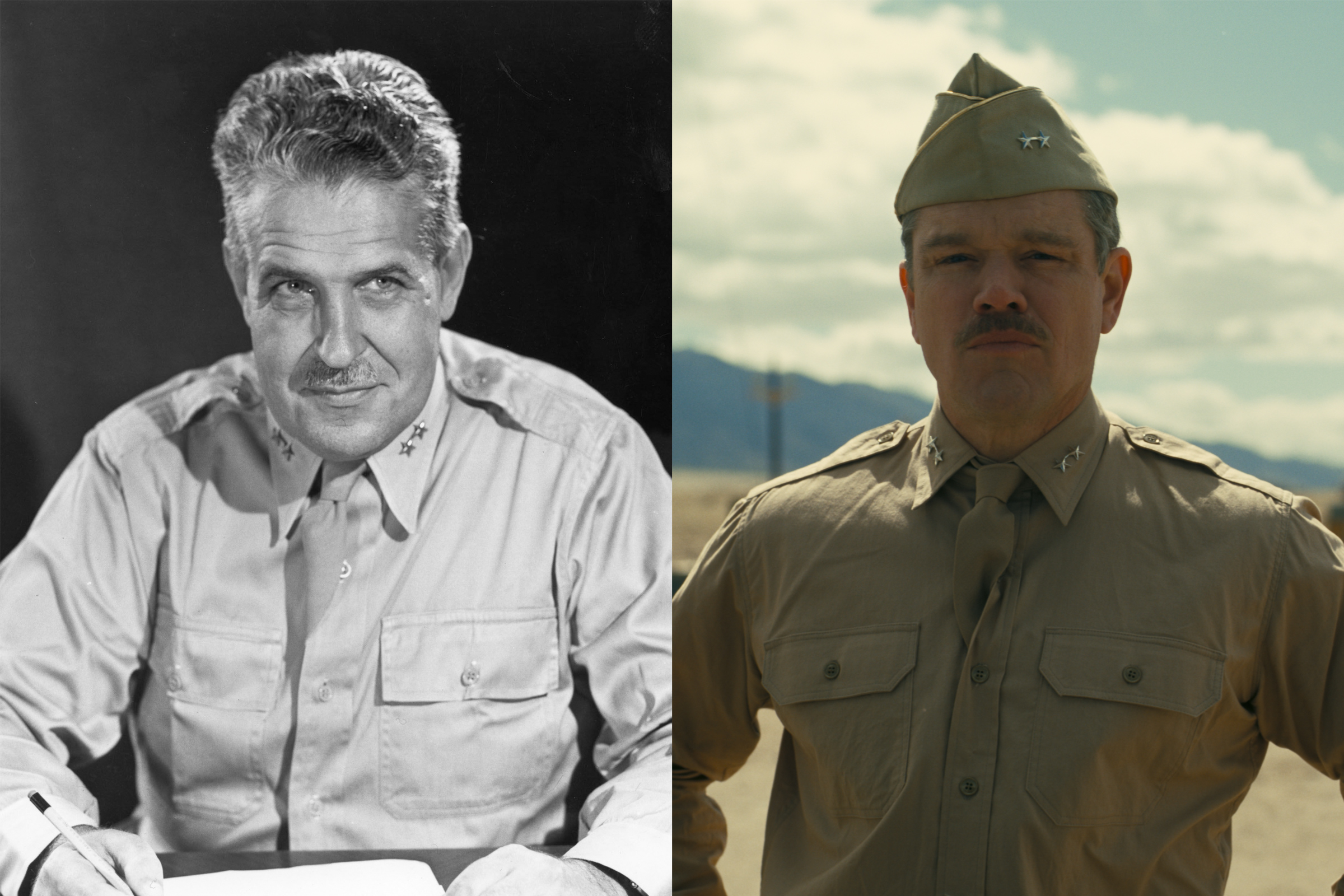
Oppenheimer assembled a group of the top scientists of the time to live and work at Los Alamos until the bomb had been completed. Less than three years after the laboratory’s founding, the world’s first nuclear weapons test, dubbed the Trinity test, took place in the nearby Jornada del Muerto desert on July 16, 1945. The test was successful in proving that the bomb worked, but it caused decades of immense harm to Indigenous people living in the surrounding area .
Three weeks later, on Aug. 6 and 9, respectively, the United States detonated two atomic bombs over the Japanese cities of Hiroshima and Nagasaki, ending the war. The bombings together killed between an estimated 110,000 to 210,000 people, most of whom were civilians.
Oppenheimer’s post-war life
Following the war, public opinion about the use of the atomic bomb wavered. While visiting the White House in October 1945, as shown in the movie, Oppenheimer told President Harry S. Truman (played by Gary Oldman), “Mr. President, I feel I have blood on my hands.”
However, Oppenheimer was hailed as a national hero by many and, in 1946, was awarded a Medal for Merit. When the Manhattan Project came under the jurisdiction of the newly-formed AEC, the agency charged with overseeing all atomic research and development in the U.S., Oppenheimer was named chairman of the General Advisory Committee. As chairman, he staunchly opposed the development of the hydrogen bomb—a “Super Bomb” conceived by fellow Los Alamos scientist Edward Teller (played by Benny Safdie) that was a thousand times more powerful than the atomic bomb—when Cold War tensions began to rise between the U.S. and the Soviet Union.
In 1947, Oppenheimer had also been appointed director of the Institute for Advanced Study in Princeton, N.J. by Lewis Strauss (played by Robert Downey Jr.), who would go on to become chairman of the AEC.
The AEC hearing
During his tenure as chairman of the General Advisory Committee, Oppenheimer’s controversial stance on the hydrogen bomb made him a number of political enemies. Strauss, whom Oppenheimer had humiliated at a Congressional hearing about whether or not to ban the sale of radioisotopes, took a particular dislike to the physicist.
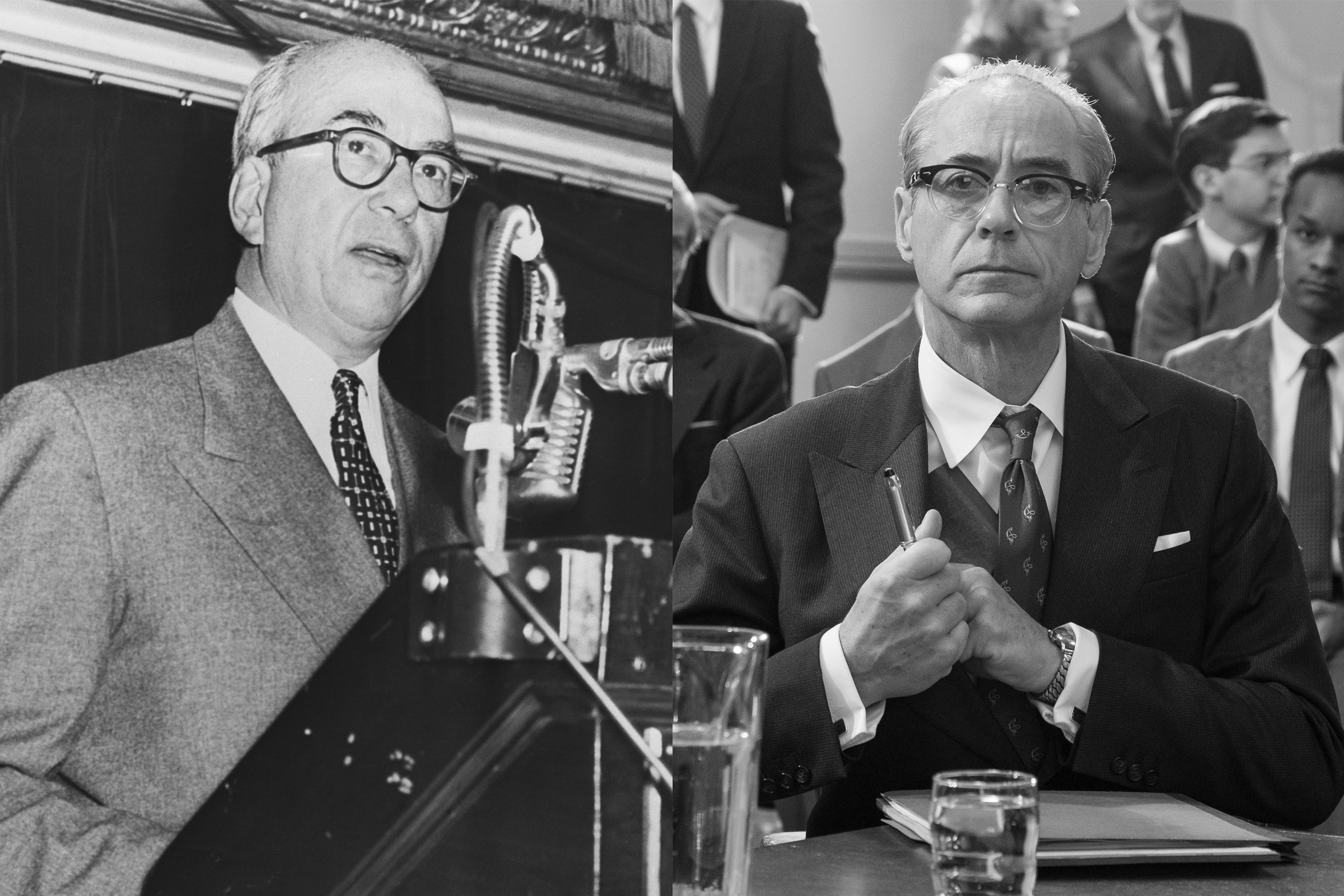
In November 1953, William Liscum Borden (played by David Dastmalchian), a close confidant of Strauss and former executive director of Congress’s Joint Committee on Atomic Energy, sent a letter to FBI director J. Edgar Hoover suggesting that “more probably than not J. Robert Oppenheimer is an agent of the Soviet Union.”
The letter was passed on to President Dwight D. Eisenhower and Oppenheimer was informed his security clearance had been revoked in a December 1953 meeting with Strauss. Oppenheimer appealed the decision and, on April 12, 1954, a monthlong security hearing began during which Oppenheimer’s previous communist leanings and associations, views on U.S. nuclear policy, and other personal transgressions were used to discredit him in a kangaroo court-style proceeding led by AEC lawyer Roger Robb (played by Jason Clarke).
The result of the security hearing came to define Oppenheimer for the rest of his life, with Oppenheimer’s close friend and fellow physicist Isidor Isaac Rabi (played by David Krumholtz) later saying that, “[Oppenheimer] was a man of peace and they destroyed him. He was a man of science and they destroyed this man. A small, mean group.”
Oppenheimer stayed on as director of the Institute for Advanced Study until 1966, shortly before dying of throat cancer at his Princeton home on Feb. 18, 1967. Prior to his death he was presented in 1966 with the AEC’s highest honor, the Enrico Fermi Award—the award we see him receiving in a flash forward while talking to Albert Einstein (played by Tom Conti) in the movie’s final scene—by President Lyndon B. Johnson.
In his acceptance speech, Oppenheimer referenced former President Thomas Jefferson’s odes to “the brotherly spirit of science.”
“We have not, I know, always given evidence of that brotherly spirit,” he said . “This is not because we lack vital common or intersecting scientific interests. It is in part because, with countless other men and women, we are engaged in this great enterprise of our time, testing whether men can both preserve and enlarge life, liberty, and the pursuit of happiness, and live without war as the great arbiter of history.”
Correction, Aug. 4
The original version of this story misstated the name of the institute Oppenheimer directed. It is the Institute for Advanced Study in Princeton, N.J., not the Institute of Advanced Studies at Princeton.
More Must-Reads From TIME
- Exclusive: Google Workers Revolt Over $1.2 Billion Contract With Israel
- Jane Fonda Champions Climate Action for Every Generation
- Stop Looking for Your Forever Home
- The Sympathizer Counters 50 Years of Hollywood Vietnam War Narratives
- The Bliss of Seeing the Eclipse From Cleveland
- Hormonal Birth Control Doesn’t Deserve Its Bad Reputation
- The Best TV Shows to Watch on Peacock
- Want Weekly Recs on What to Watch, Read, and More? Sign Up for Worth Your Time
Write to Megan McCluskey at [email protected]
We will keep fighting for all libraries - stand with us!
Internet Archive Audio

- This Just In
- Grateful Dead
- Old Time Radio
- 78 RPMs and Cylinder Recordings
- Audio Books & Poetry
- Computers, Technology and Science
- Music, Arts & Culture
- News & Public Affairs
- Spirituality & Religion
- Radio News Archive

- Flickr Commons
- Occupy Wall Street Flickr
- NASA Images
- Solar System Collection
- Ames Research Center

- All Software
- Old School Emulation
- MS-DOS Games
- Historical Software
- Classic PC Games
- Software Library
- Kodi Archive and Support File
- Vintage Software
- CD-ROM Software
- CD-ROM Software Library
- Software Sites
- Tucows Software Library
- Shareware CD-ROMs
- Software Capsules Compilation
- CD-ROM Images
- ZX Spectrum
- DOOM Level CD

- Smithsonian Libraries
- FEDLINK (US)
- Lincoln Collection
- American Libraries
- Canadian Libraries
- Universal Library
- Project Gutenberg
- Children's Library
- Biodiversity Heritage Library
- Books by Language
- Additional Collections

- Prelinger Archives
- Democracy Now!
- Occupy Wall Street
- TV NSA Clip Library
- Animation & Cartoons
- Arts & Music
- Computers & Technology
- Cultural & Academic Films
- Ephemeral Films
- Sports Videos
- Videogame Videos
- Youth Media
Search the history of over 866 billion web pages on the Internet.
Mobile Apps
- Wayback Machine (iOS)
- Wayback Machine (Android)
Browser Extensions
Archive-it subscription.
- Explore the Collections
- Build Collections
Save Page Now
Capture a web page as it appears now for use as a trusted citation in the future.
Please enter a valid web address
- Donate Donate icon An illustration of a heart shape
American Prometheus : the triumph and tragedy of J. Robert Oppenheimer
Bookreader item preview, share or embed this item, flag this item for.
- Graphic Violence
- Explicit Sexual Content
- Hate Speech
- Misinformation/Disinformation
- Marketing/Phishing/Advertising
- Misleading/Inaccurate/Missing Metadata
![[WorldCat (this item)] [WorldCat (this item)]](https://archive.org/images/worldcat-small.png)
plus-circle Add Review comment Reviews
20,445 Views
318 Favorites
Better World Books
DOWNLOAD OPTIONS
No suitable files to display here.
IN COLLECTIONS
Uploaded by [email protected] on April 7, 2011
SIMILAR ITEMS (based on metadata)
12 Best Books to Read After Watching Oppenheimer
If you want to learn more about the Manhattan Project, the atomic bomb, the Trinity Site, and J. Robert Oppenheimer himself, here's where to start.
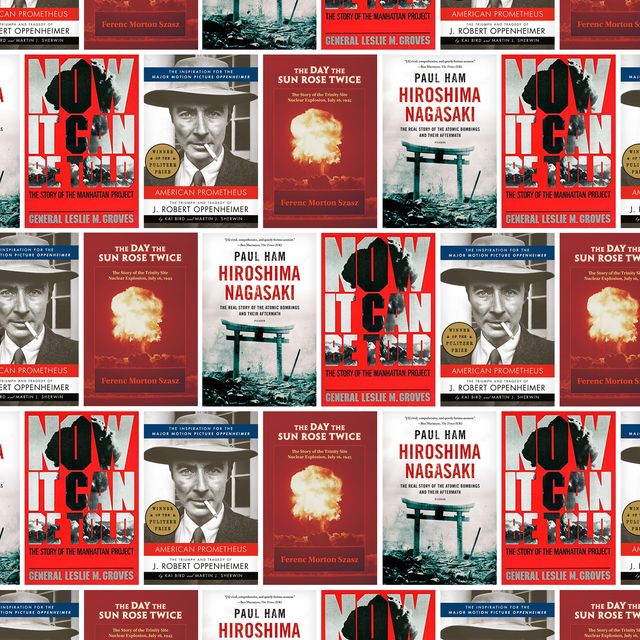
Every item on this page was chosen by a Town & Country editor. We may earn commission on some of the items you choose to buy.
"My goal when making the film—I don’t make films to send a message, I made it because it’s a fascinating story. But part of that storytelling is getting back to basics about the bomb, stripping away policy statements, philosophy, the geopolitical situation and just looking at raw power that’s about to be unleashed and what that means for the people involved and means for all of us," Nolan told Bulletin of the Atomic Scientists .
Here, 12 books to watch if Oppenheimer peaked your interest in the atomic bomb—including the 700-page biography that Nolan based his film on.
American Prometheus: The Triumph and Tragedy of J. Robert Oppenheimer
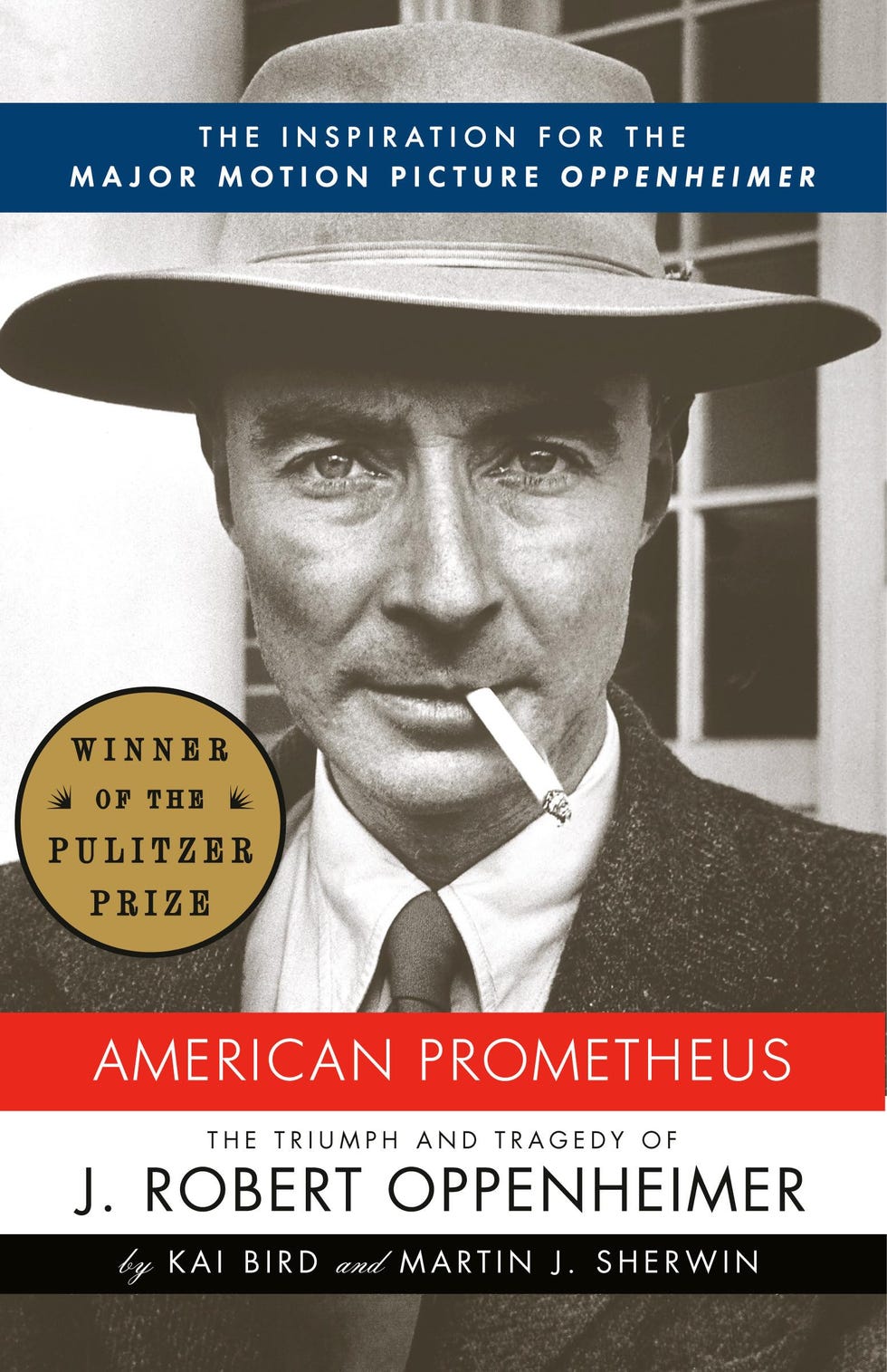
Start with the book that Christopher Nolan's Oppenheimer is based on: Kai Bird and Martin J. Sherwin's American Prometheus , which won the Pulitzer Prize in 2006. There was one scene that hooked Nolan, the director told the Los Angeles Times : "Los Alamos, this place that will always live in history or infamy, was first a place where Oppenheimer and his brother loved to go camping. Suddenly, like a bolt from the blue, I’m looking at the most personal possible connection between a character and a massive change to the world that couldn’t be undone." This is the definitive Oppenheimer biography.
The Making of the Atomic Bomb
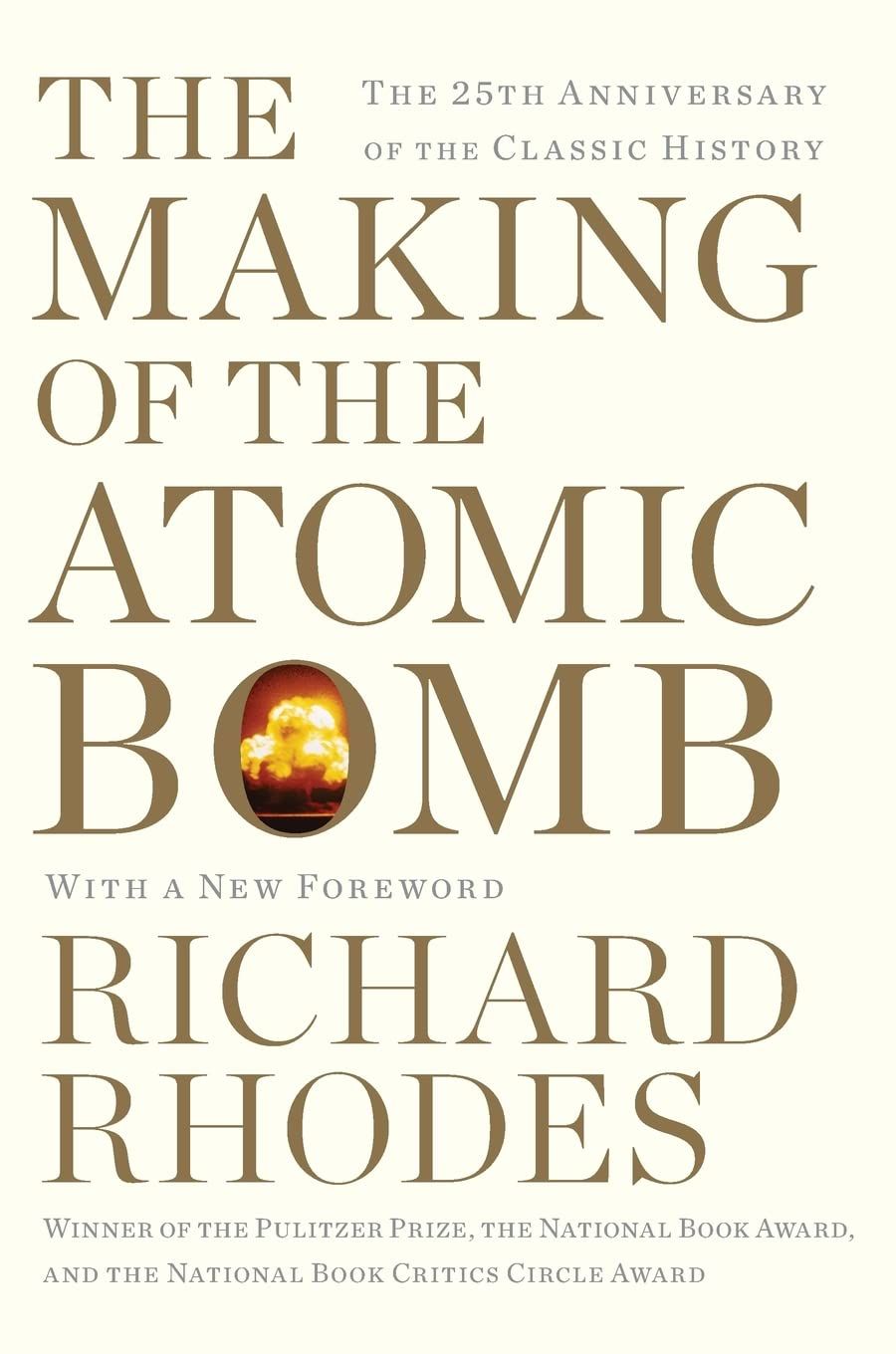
Richard Rhodes's The Making of the Atomic Bomb , which also won the Pulitzer Prize, sets out to tell the definitive history of nuclear weapons. As the publisher describes, "From nuclear power’s earliest foreshadowing in the work of H.G. Wells to the bright glare of Trinity at Alamogordo and the arms race of the Cold War, this dread invention forever changed the course of human history, and The Making of The Atomic Bom b provides a panoramic backdrop for that story."
109 East Palace: Robert Oppenheimer and the Secret City of Los Alamos
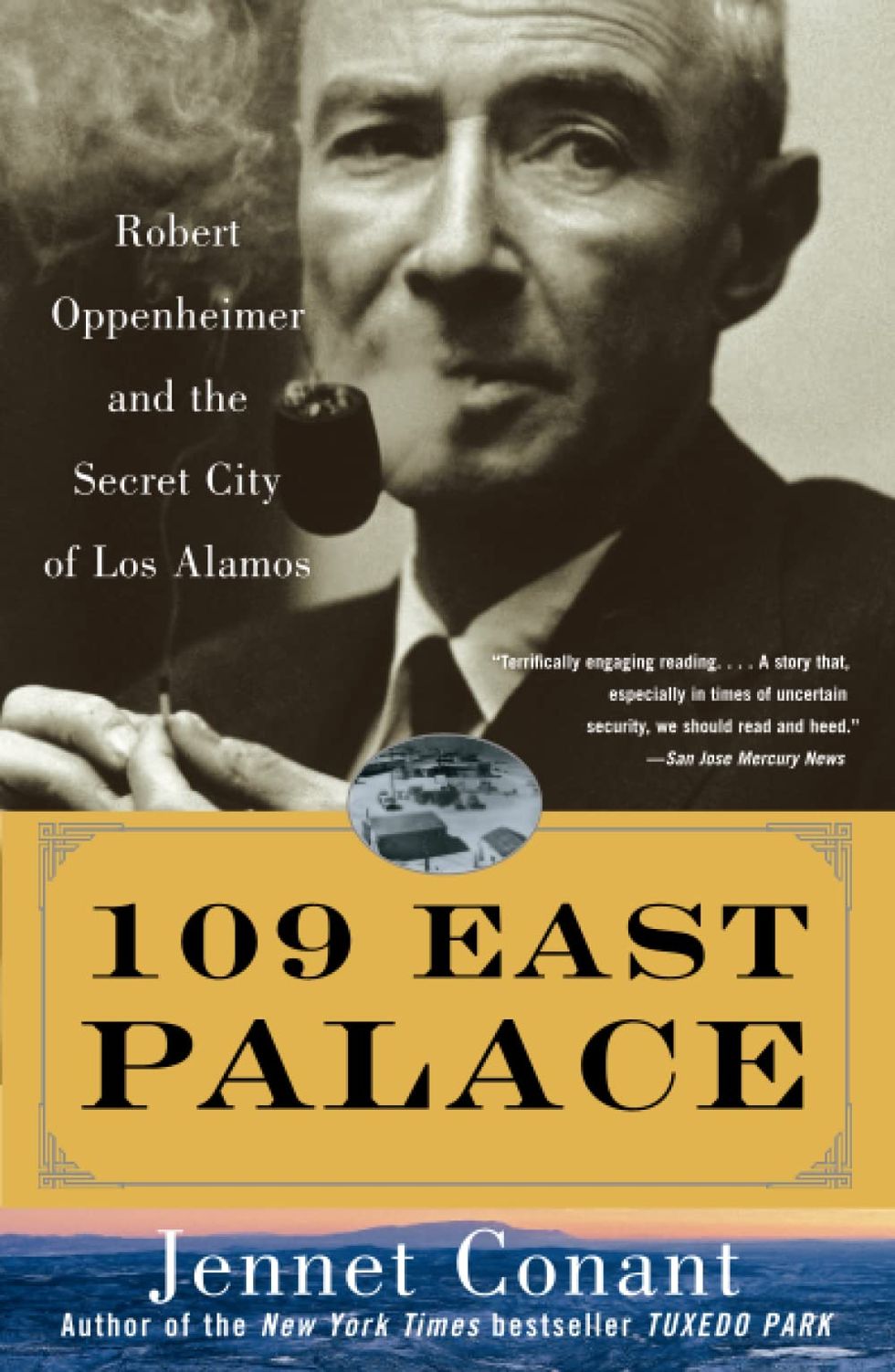
If you're curious about who lived in the secret city of Los Alamos during the Manhattan Project, 109 East Palace is for you. Author Jennet Conant's grandfather James B. Conant, a chemist, was involved in the project, giving her unique insight into the lives of those in Los Alamos. She does not focus on what she calls the "saga of scientific discovery," instead choosing to turn her attention to the personal lives of the key personnel of the Manhattan Project.
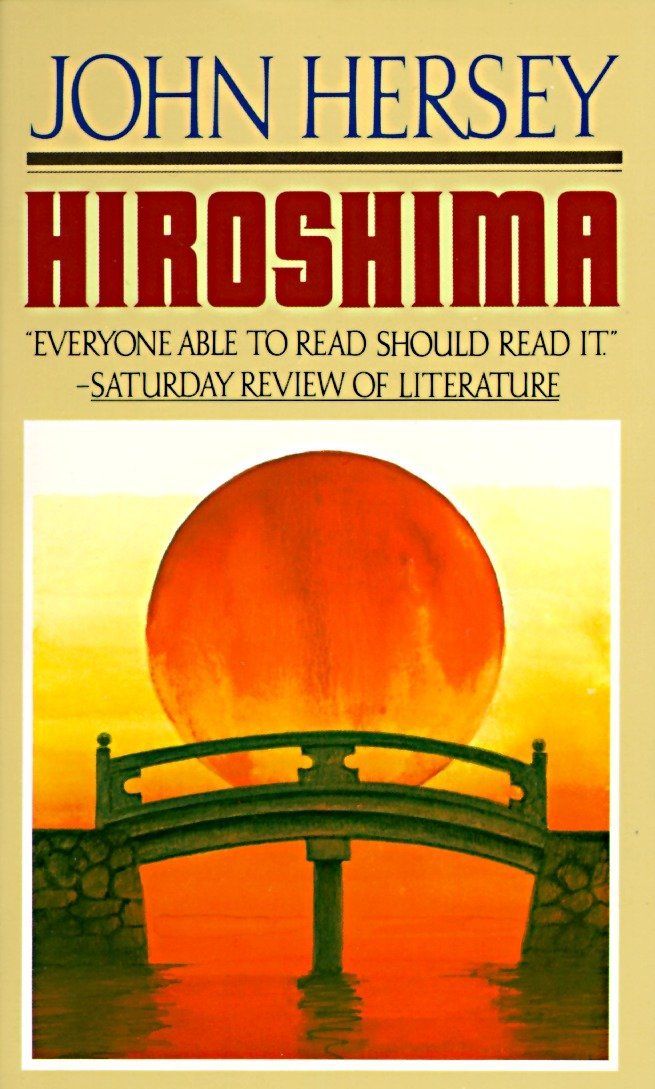
A book list about Oppenheimer, the Manhattan Project, and the atomic bomb would be incomplete without John Hersey's Hiroshima , which tells the story of the day the bomb was dropped on Hiroshima, Japan on August 6, 1945, through the lens of six survivors.
The Ruin of J. Robert Oppenheimer: And the Birth of the Modern Arms Race

What happened to Oppenheimer after World War II? Priscilla J. McMillan's book focuses on 1949 to 1955, and the trial of Oppenheimer when he was charged with violating national security. As McMillan writes in the introduction, "Oppenheimer's foes used deceit and treachery to humiliate and banish him from public service...His legacy as a public servant willing to raise his voice in dissent is even more significant and inspiring now than it was then."
The First Atomic Bomb: The Trinity Site in New Mexico (America’s Public Lands)
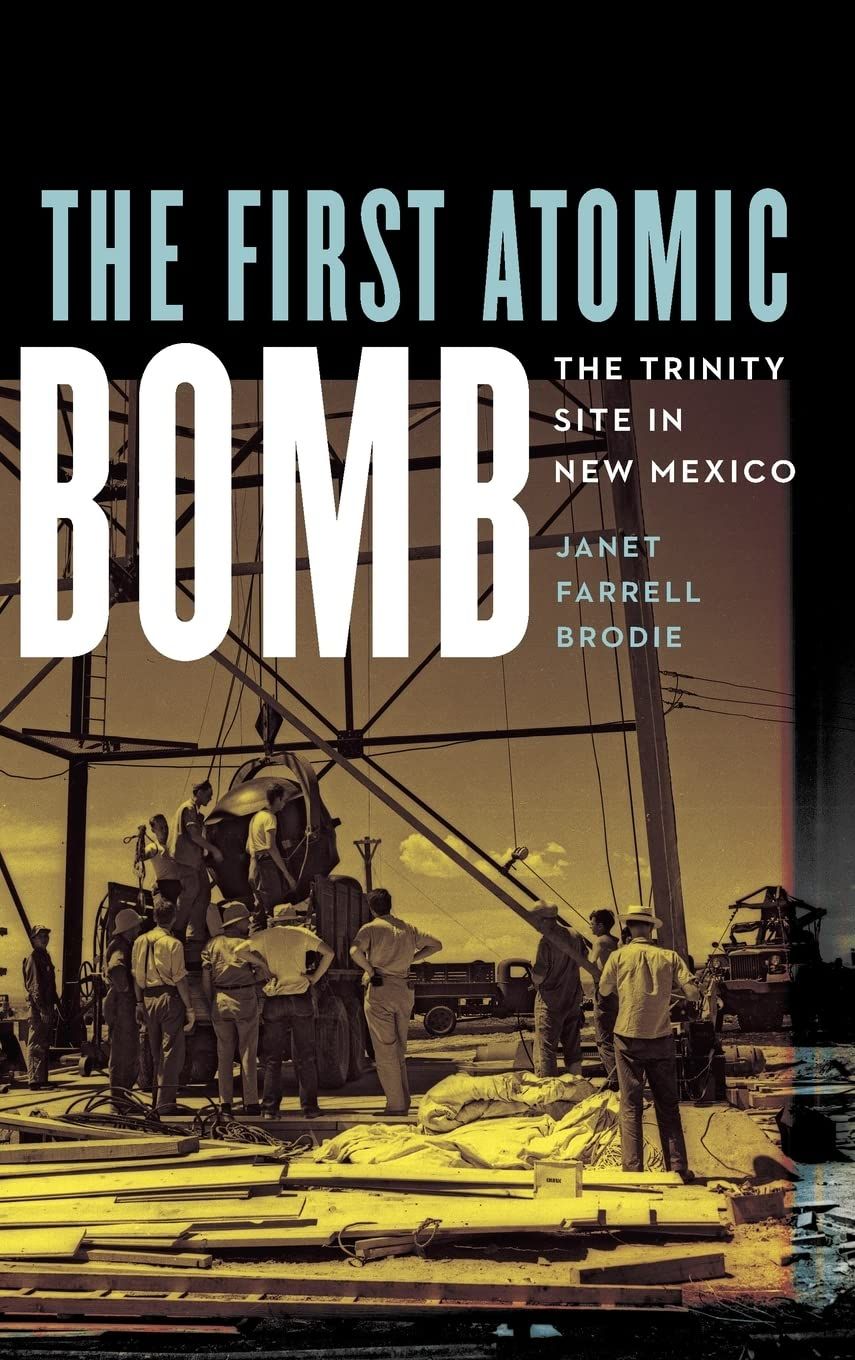
The test of the atomic bomb in the New Mexico desert, three weeks before the bombing of Hiroshima, took place on what is now called the "Trinity Site." One day a year, it is open to the public. Author Janet Farrell Brodie focuses on the place and environment that "carries special historical weight in American memory."
Now It Can Be Told: The Story Of The Manhattan Project
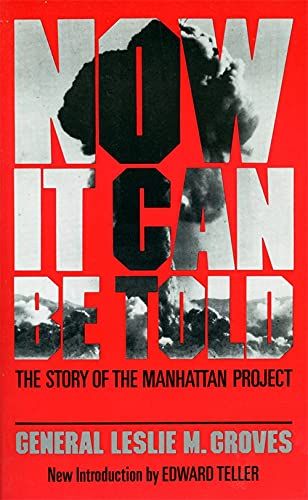
General Leslie Groves was the man who hired Oppenheimer, planned the Los Alamos facilities, and in essence, made the Manhattan Project possible. (Matt Damon plays Groves in Oppenheimer ). In this book, Groves tells his story. "I have recorded here only that which I am qualified to write about," he says in the foreword. "My own experiences during the development of atomic energy between September 17, 1942, and December 31, 1946, the period during which I was in charge of the Manhattan Project."
The General and the Genius: Groves and Oppenheimer - The Unlikely Partnership that Built the Atom Bomb

In this dual biography of Graves and Oppenheimer, James Kunetka looks at their unlikely partnership and how they pulled off the creation of the atomic bomb. He focuses in on their three-year collaboration.
Hiroshima Nagasaki: The Real Story of the Atomic Bombings and Their Aftermath
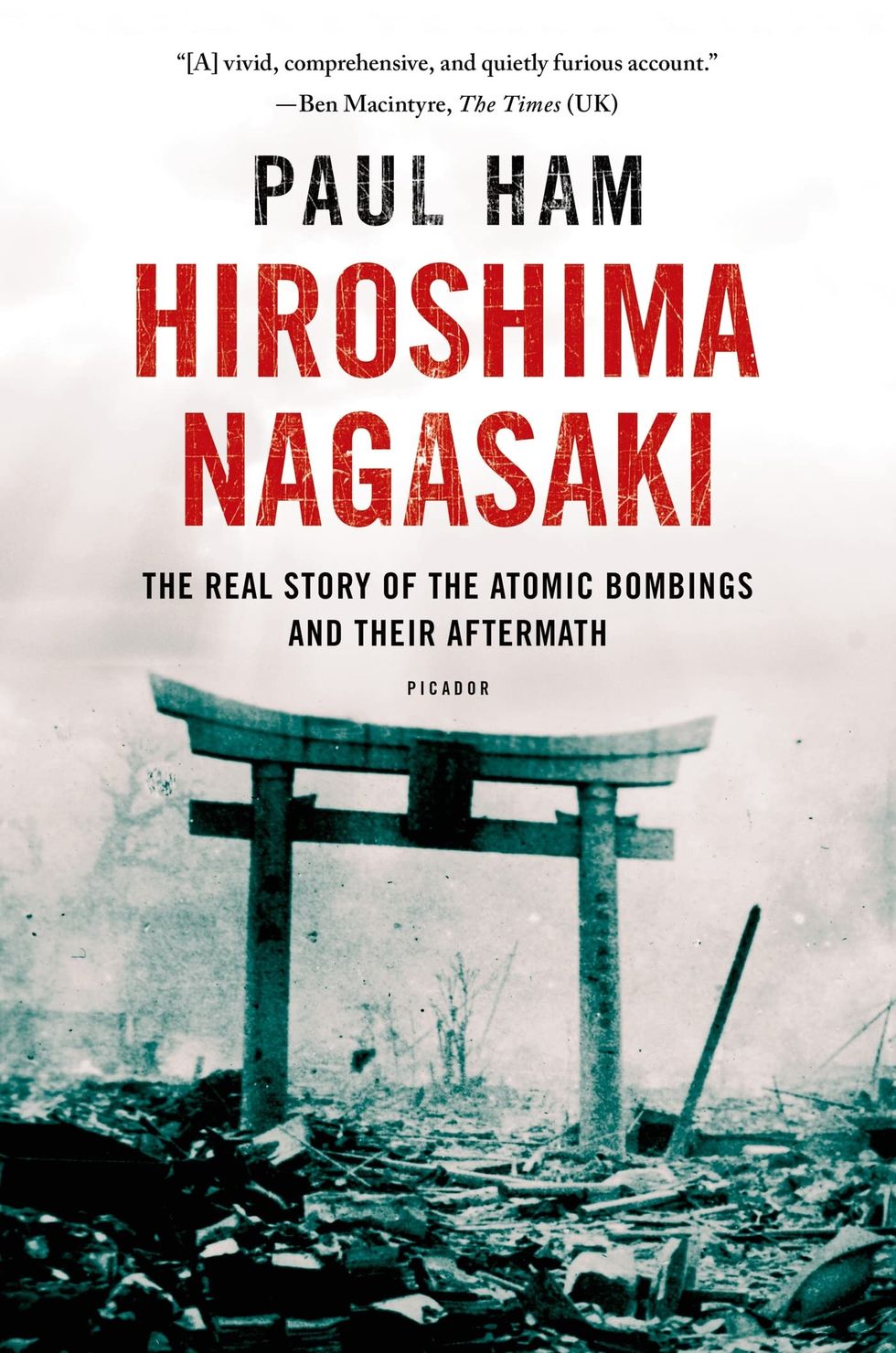
In Hiroshima Nagasaki , journalist Paul Ham examines the atomic bombings of the two Japanese cities, dismantling the idea that the attacks were justified because they ended the war. Rather, he argues, Japan was already defeated. Publisher's Weekly calls his book "a must-read for those interested in the moral aspects of total war and military strategy in general."
The Girls of Atomic City: The Untold Story of the Women Who Helped Win World War II
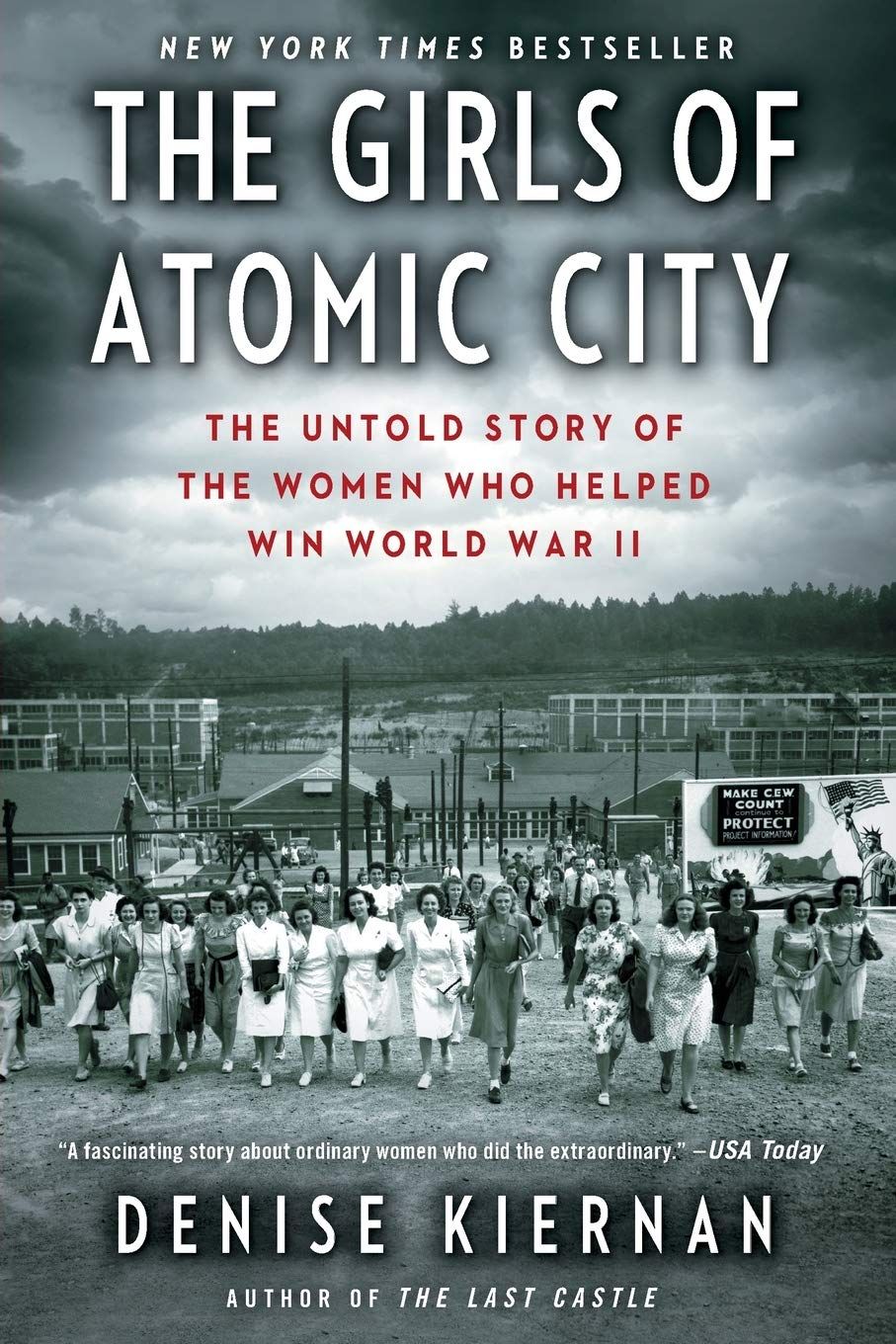
Denise Kiernan's The Girls of Atomic City is the tale of Oak Ridge, Tennessee, a secret city founded during World War II for uranium enrichment. Billboards reminded those who lived and worked in Oak Ridge, mainly young women: "What you see here, What you do here, What you hear here, When you leave here, Let it stay here." This book offers the compelling story of little-known part of the Manhattan Project's history.
University of New Mexico Press The Day the Sun Rose Twice: The Story of the Trinity Site Nuclear Explosion, July 16, 1945
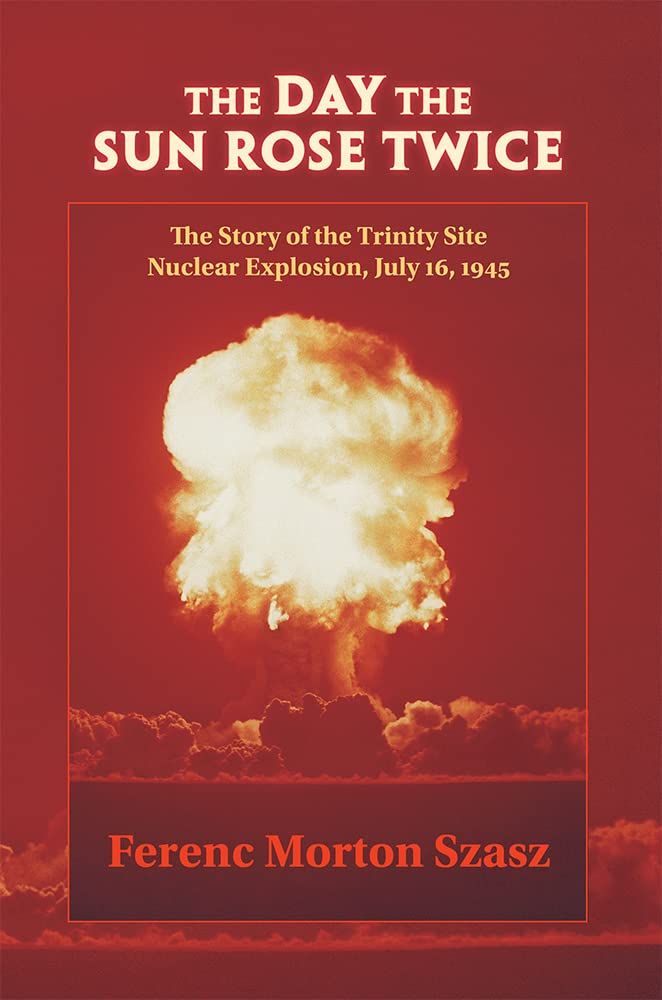
The Day the Sun Rose Twice by Ferenc Morton Szasz is the story of the detonation of the first nuclear bomb in New Mexico. "What happened at Trinity that Monday morning must go down as one of the most significant events in the last thousand years," he writes in the introduction, and sets out to explain why.

The Manhattan Project: The Birth of the Atomic Bomb in the Words of Its Creators, Eyewitnesses, and Historians
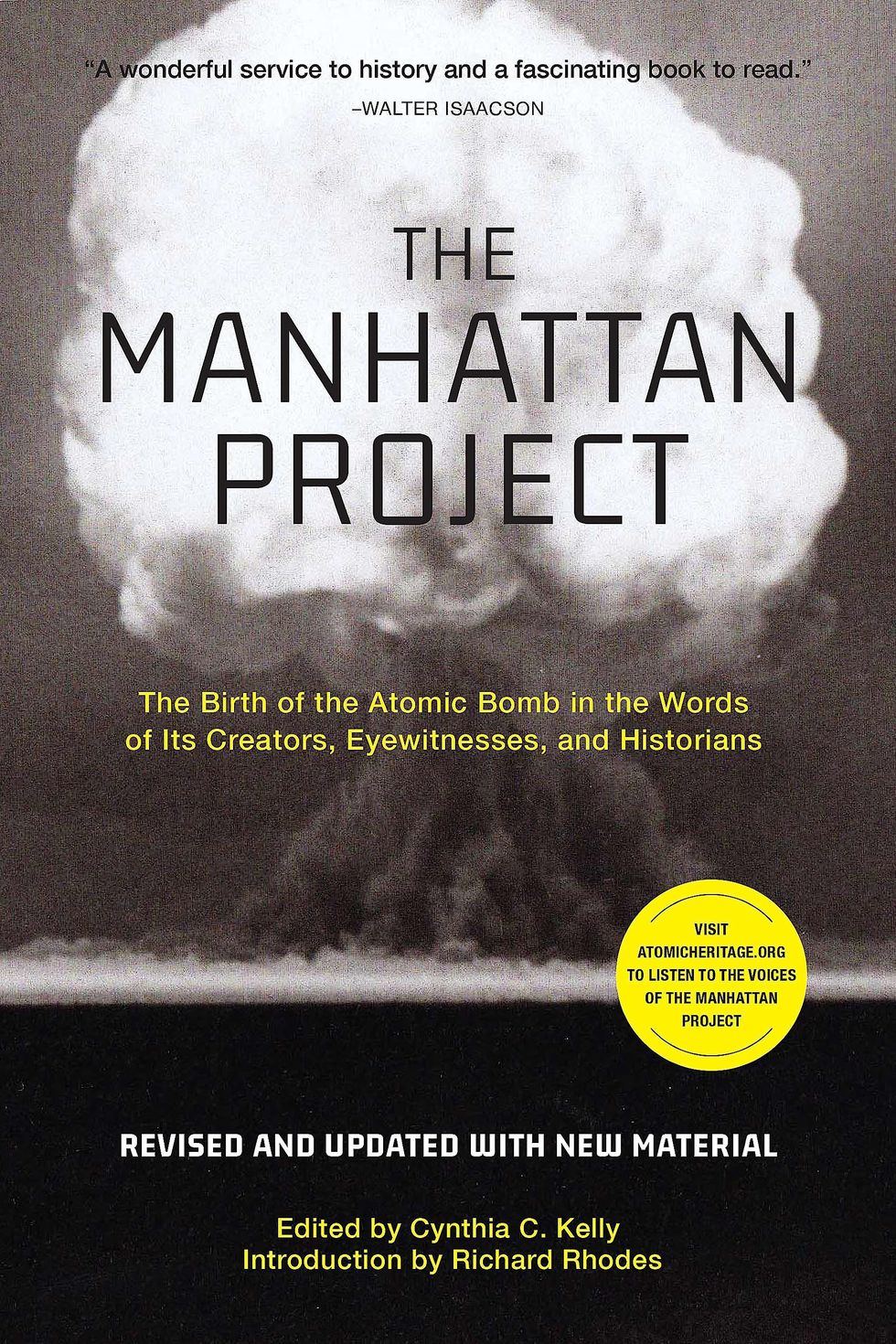
This first-person account of the Manhattan Project, aptly titled The Manhattan Project , is a collection of primary source material on what happened in Los Alamos. It includes contributions from Edward Teller, Enrico Fermi, Richard Feynman, Richard Rhodes, Neils Bohr, J. Robert Oppenheimer, Winston Churchill, Franklin D. Roosevelt, Albert Einstein, among others, and the newest edition also features writings and reflections from atomic bomb survivors.
Emily Burack (she/her) is the Senior News Editor for Town & Country, where she covers entertainment, culture, the royals, and a range of other subjects. Before joining T&C, she was the deputy managing editor at Hey Alma , a Jewish culture site. Follow her @emburack on Twitter and Instagram .

@media(min-width: 40.625rem){.css-1jdielu:before{margin:0.625rem 0.625rem 0;width:3.5rem;-webkit-filter:invert(17%) sepia(72%) saturate(710%) hue-rotate(181deg) brightness(97%) contrast(97%);filter:invert(17%) sepia(72%) saturate(710%) hue-rotate(181deg) brightness(97%) contrast(97%);height:1.5rem;content:'';display:inline-block;-webkit-transform:scale(-1, 1);-moz-transform:scale(-1, 1);-ms-transform:scale(-1, 1);transform:scale(-1, 1);background-repeat:no-repeat;}.loaded .css-1jdielu:before{background-image:url(/_assets/design-tokens/townandcountrymag/static/images/diamond-header-design-element.80fb60e.svg);}}@media(min-width: 64rem){.css-1jdielu:before{margin:0 0.625rem 0.25rem;}} Best Books of 2024 @media(min-width: 40.625rem){.css-128xfoy:before{margin:0.625rem 0.625rem 0;width:3.5rem;-webkit-filter:invert(17%) sepia(72%) saturate(710%) hue-rotate(181deg) brightness(97%) contrast(97%);filter:invert(17%) sepia(72%) saturate(710%) hue-rotate(181deg) brightness(97%) contrast(97%);height:1.5rem;content:'';display:inline-block;background-repeat:no-repeat;}.loaded .css-128xfoy:before{background-image:url(/_assets/design-tokens/townandcountrymag/static/images/diamond-header-design-element.80fb60e.svg);}}@media(min-width: 64rem){.css-128xfoy:before{margin:0 0.625rem 0.25rem;}}

Queen Camilla's Son Is Writing a Royal Cookbook

Amor Towles on 24-Hour Room Service

The Best Books to Read This April

Kate Middleton's Brother Is Writing a Memoir
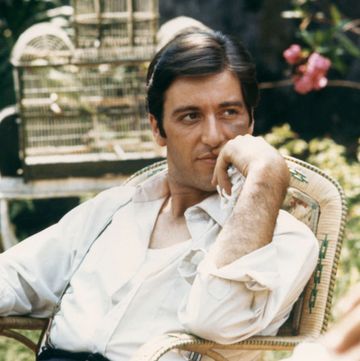
Al Pacino Is Writing a Memoir
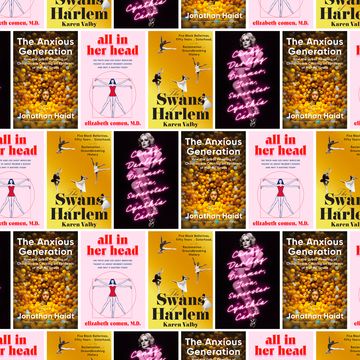
The 45 Must-Read Books of Spring 2024
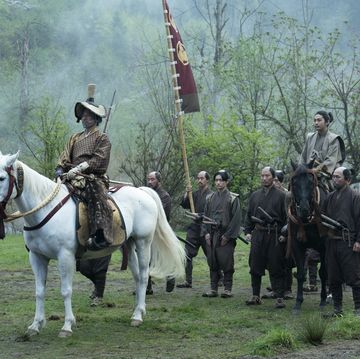
How 'Shōgun' Adapted James Clavell's Novel

Inside Oliver Furth's Redesign of a Bel Air Home
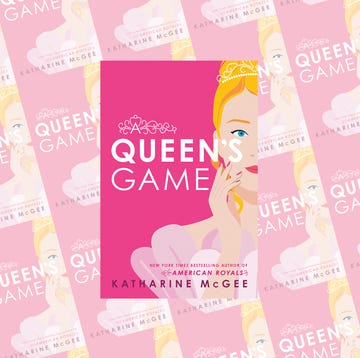
Katharine McGee's New Historical Romance Series
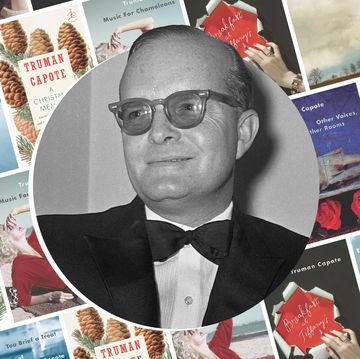
The Best Books by Truman Capote
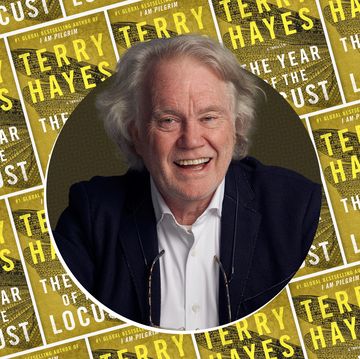
A Spy Thriller That Was 10 Years in the Making
Oppenheimer’s big-screen odyssey: The man, the book and the film’s 50-year journey

- Show more sharing options
- Copy Link URL Copied!
Among the many astonishing facets of Christopher Nolan’s “ Oppenheimer ” is the speed at which the movie came together. In early 2021, the director read “ American Prometheus : The Triumph and Tragedy of J. Robert Oppenheimer,” a sweeping biography by Martin Sherwin and Kai Bird of the physicist known as the father of the atomic bomb. Riveted, Nolan immediately began adapting it into a screenplay. Less than a year later, he was filming. The movie , among this summer’s most anticipated, premieres on Friday.
But that’s only half the equation. By another metric — befitting one of history’s most complex figures and a filmmaker drawn to labyrinthine narratives — the adaptation of “Oppenheimer” can be seen as a multigenerational saga nearly half a century in the making. Nolan’s epic movie builds on an epic book with an epic industry backstory. The writing of “American Prometheus” took 25 years, and since its publication in 2005, the book had been floating through Hollywood like an atom no one could figure out how to split: always under option, never moving past development.

Christopher Nolan goes deep on ‘Oppenheimer,’ his most ‘extreme’ film to date
Diving into an explosive episode of 20th century history that launched the nuclear age, director Christopher Nolan unleashes the most ambitious film of his career.
July 11, 2023
This origin story begins in 1980, when Martin Sherwin , then 43, signed with Knopf to write a biography of Oppenheimer. Marty, as everyone called him, poured himself into the research, taking his family on a trip to New Mexico to meet Oppenheimer’s reclusive son, Peter, and tracking down just about every living person who had known the scientist. In time, Sherwin amassed some 50,000 pages of declassified government documents outlining Oppenheimer’s years as director of the Los Alamos lab and the subsequent loss of his security clearance during the panic of McCarthyism.
What Sherwin did not do, however, was sit down and write.
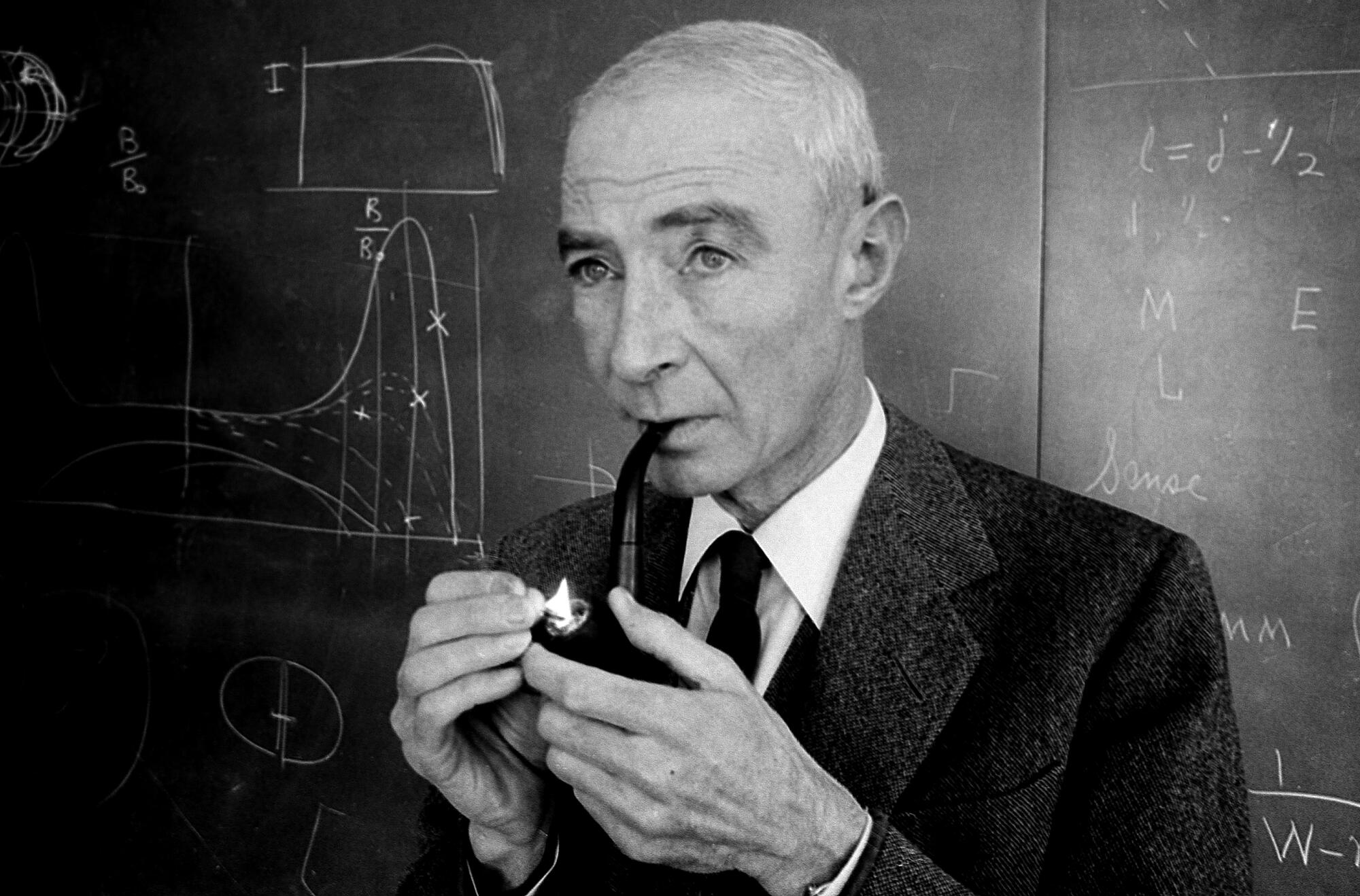
A singular collaboration
The deadline came and went, many times over. Sherwin’s son, Alex, recalls his father’s unwritten book as a subject of frequent ribbing at the dinner table of the family’s Boston home. “It was a great source of pleasure,” Alex said in a recent conversation. “He would say to me, ‘Do your homework,’ and I would say, ‘Write your book!’ He had a great sense of humor about it.”
Far from the cliché of the tortured writer, Sherwin was, if anything, diverted by his own rabid enthusiasm. He took a professorship at Tufts University, where he established the Nuclear Age History and Humanities Center. Presaging the internet era, Sherwin pioneered what he called a “ space bridge ,” using a satellite during the late 1980s to hold live discussions between his classes and those at Moscow State University. He also wrote numerous essays and op-eds about the nuclear age.
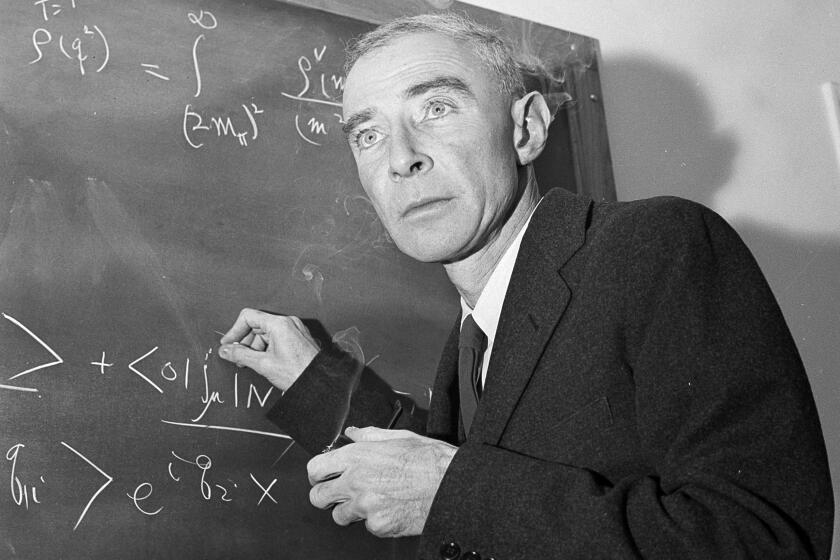
World & Nation
Robert Oppenheimer was wrongly stripped of security clearance, U.S. says
The Biden administration has reversed a 1954 decision to revoke the security clearance of physicist Robert Oppenheimer, leader of the Manhattan Project.
Dec. 17, 2022
But by the late 1990s, nearly 20 years behind schedule on his book, Sherwin’s attitude toward the project became less sanguine. “At several points, the light at the end of the tunnel got very dim,” he later noted to an audience at a book fair. His wife, Susan, recalled in an interview that Sherwin began remarking that he was going to take the book to the grave.
“That became his joke,” she said, “that it would be on his tombstone.”

Sherwin came up with a bold solution: He would bring in a partner on the project — specifically, his friend and fellow historian Kai Bird . The two had met in 1980 and grew close in 1995, when both were involved in addressing a divisive Smithsonian exhibit of the Enola Gay , the plane that released Oppenheimer’s bomb over Hiroshima in August of 1945. (When the plane was again exhibited in 2003, they co-authored an op-ed for The Times about it.)
While Bird was intrigued by the subject, he didn’t immediately warm to the idea of working together.
“I told him no — that I liked him too much,” recalled Bird, whose first book had begun as a collaboration with a friend that ended acrimoniously. Bird’s wife was adamant that he not take on another.
Sherwin was undeterred. Over the next six months, he traveled regularly from Boston to Bird’s home in Washington, D.C. “He seduced the two of us into thinking this was a good project,” said Bird. The two wrote a proposal, and Knopf agreed to a new contract in 2000 — offering them a book advance that came to $290,000 (after subtracting $35,000 paid to Sherwin in 1980). Bird recalled that Sherwin gave him a “bigger chunk” of the money since the book would be Bird’s sole income.
“Part of Kai and Marty’s story is the story of something that’s been lost in the publishing,” said Susan Sherwin. “The industry had a willingness to nurture people and projects in a way that’s kind of unimaginable today.”
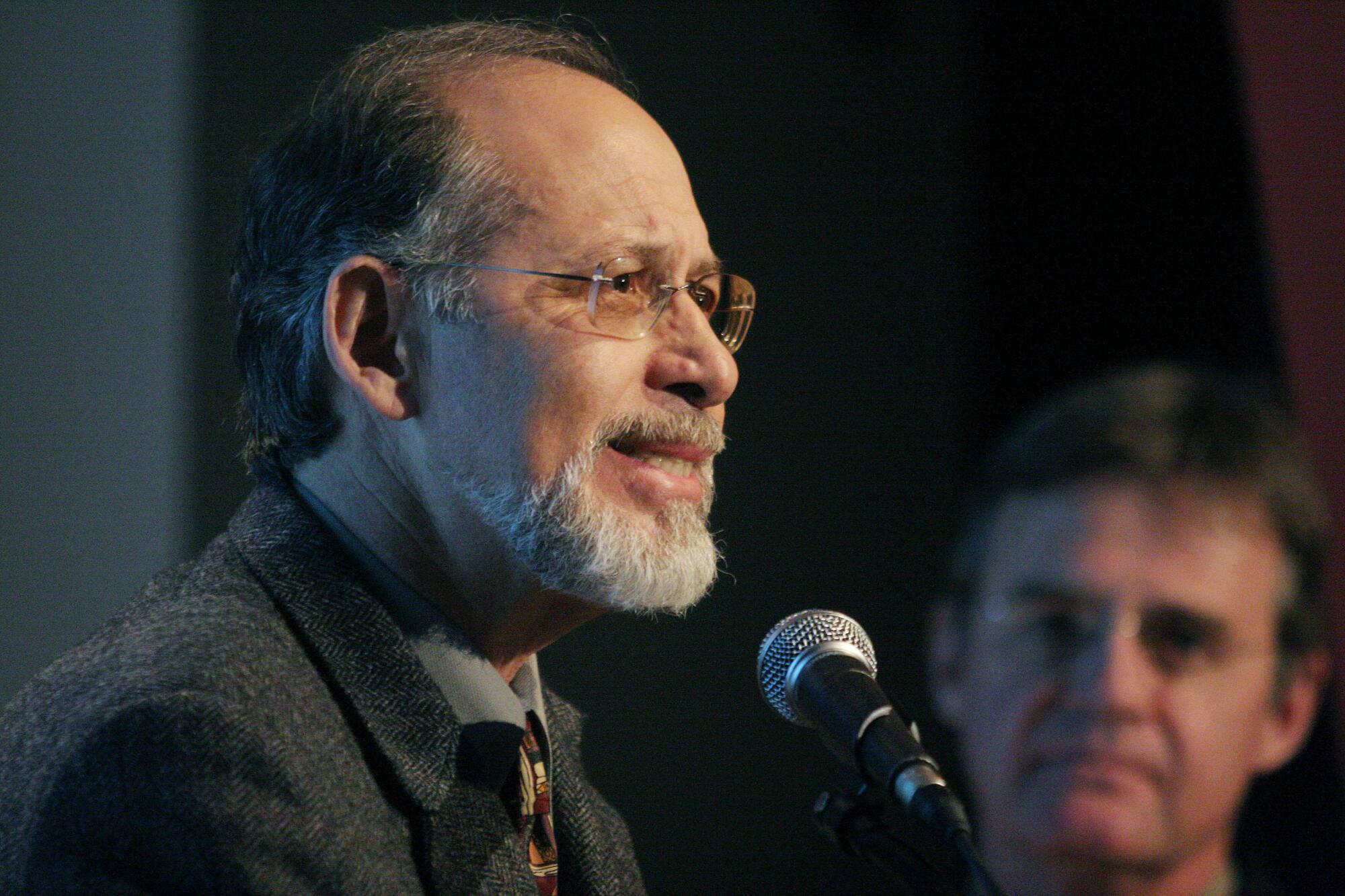
The men celebrated the deal with martinis, christening the project with the same toast favored by Oppenheimer with the scientists of Los Alamos: “To the confusion of our enemies!”
Over the course of four years, they volleyed chapters back and forth to produce what became “American Prometheus,” a 721-page biography that is both grand in scope and granular in personal detail. Rapturously reviewed in 2005, the book won a Pulitzer Prize, an honor the writers took as a tribute to their singular collaboration.
A movie Marty would have loved
Immediately following its publication, the book seemed to be on a fast track to becoming a movie when Sam Mendes , the director then known for “ American Beauty ” and “Jarhead,” optioned it.
“We were very excited and completely naive,” said Susan, describing a familiar story of Hollywood entropy: unbridled enthusiasm morphing into development snags before petering out completely. Though the book continued to spark interest and remained under option by various producers, its authors stopped believing a movie would ever emerge.
“We acquired what you could call a more jaundiced view of Hollywood,” Bird said.

Then in September of 2021 — 40 years after Sherwin started the book and 16 since it was published — a friend of Bird’s sent him a curious item in Variety noting that Nolan’s next project would be about Oppenheimer. Bird and Sherwin had heard nothing about this. “I assumed maybe he was using a different book, or just going from the public record,” Bird said.

How Judy Blume’s ‘Margaret’ became a movie: Time travel and no streamers, for a start
Judy Blume, James L. Brooks and Kelly Fremon Craig hash out — and argue over — how they finally came to adapt “Are Your There God? It’s Me, Margaret.”
April 26, 2023
But Nolan was indeed basing his movie on “American Prometheus,” thanks in part to the tenacity of someone who had never worked in Hollywood. Since 2015, the film rights had been under option by J. David Wargo, a successful New York businessman who studied physics at the Massachusetts Institute of Technology and was itching to get the book into production. Various scripts had been commissioned and rejected.
“Then, during the midst of the pandemic, Wargo got frustrated with the project and flew out to L.A. on a rented private plane and went to Hollywood,” Bird explained. In L.A., Wargo met with the actor James Woods , an old friend, who set up a meeting with Charles Roven , one of Nolan’s longtime producers. Roven handed the book to the director. (Wargo and Woods are both executive producers on “Oppenheimer.”)
As it happened, Nolan had recently completed “Tenet,” a movie that references the atomic bomb, and one of its stars, Robert Pattinson , had given the director a book of Oppenheimer’s speeches as a wrap gift.
“I’m always pushing various things forward, but this is one where a lot of different planets aligned,” Nolan explained during an interview, recalling the particular scene from “American Prometheus” that hooked him: “Los Alamos, this place that will always live in history or infamy, was first a place where Oppenheimer and his brother loved to go camping. Suddenly, like a bolt from the blue, I’m looking at the most personal possible connection between a character and a massive change to the world that couldn’t be undone.”
“It was all very slow,” said Bird, “until suddenly one day it wasn’t.”
That fall, Nolan called Bird, asking if he and Sherwin could come up to New York from D.C. (where Sherwin had also moved) to meet with the director. Sherwin, then 84, was at that point too weak to travel. Two years earlier, he had been diagnosed with small-cell lung cancer.
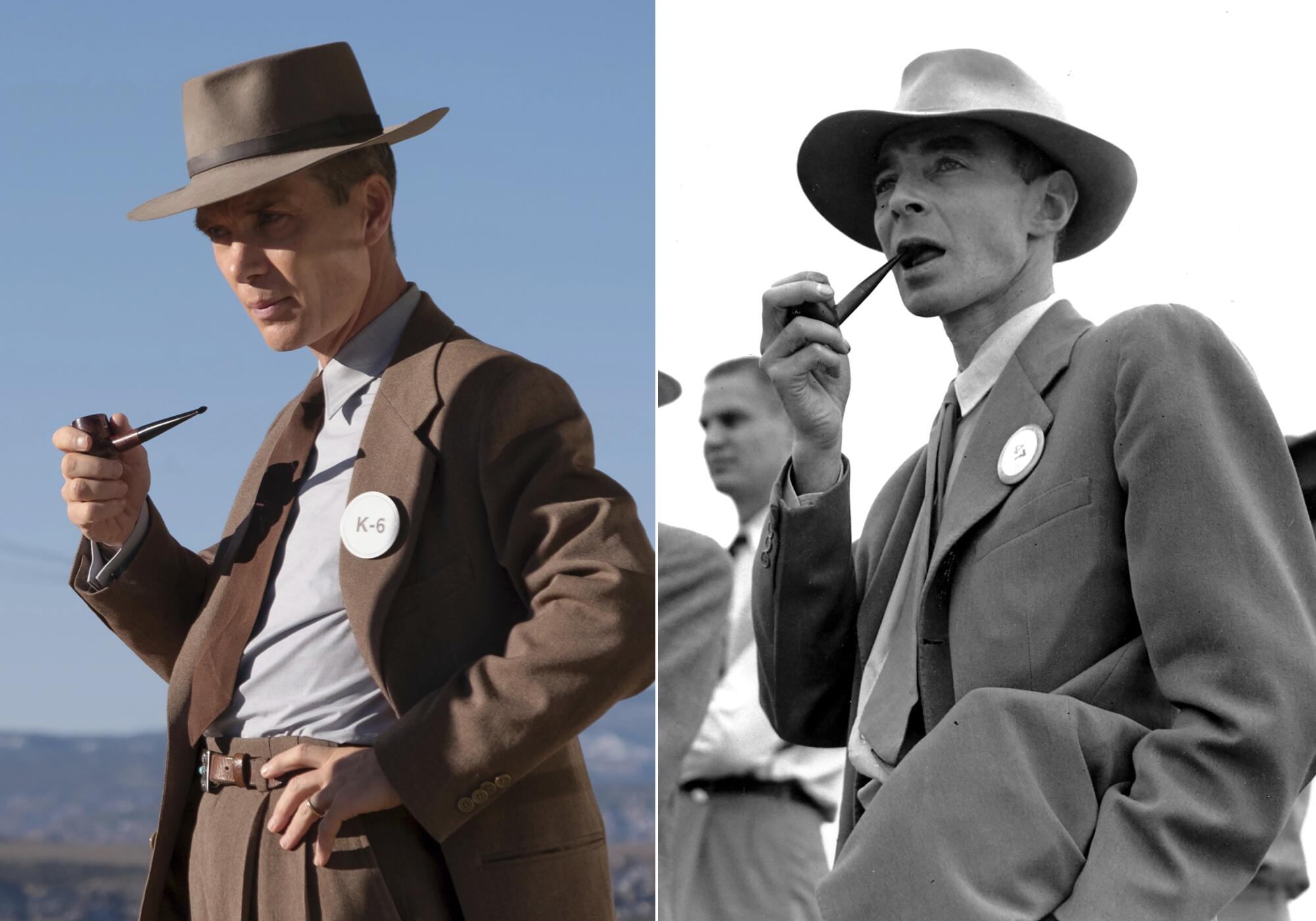
“We met for two and a half hours, and Nolan humored my probing about the project,” Bird said. “But he made it clear that he worked confidentially and was not sharing the script.”
Nolan, for his part, found their meeting quelled some of his own jitters about the adaptation.
“One thing Kai said to me which gave me an enormous sense of confidence was that he believed any film should be framed around the security clearance,” said Nolan, whose script and final film is structured around that drama. “I breathed a large sigh of relief knowing he wouldn’t think I’d done anything so radical.”
Bird, after raising a glass to Nolan and toasting him with Oppenheimer’s words — “To the confusion of our enemies!” — was able to extract one kernel about the film.
“Did that line make it into the script?” he asked Nolan.
“It was in there,” the director said, “but I had to cut it for space.”

Meet 8 industry players behind Hollywood’s book adaptation boom
Who keeps the adaptation pipeline churning? These 8 agents, managers, scouts and producers are among Hollywood’s top conduits from book to screen.
Feb. 11, 2021
Back in Washington, Bird rushed over to Sherwin’s home to tell him about the meeting. “He was gratified,” Bird recalled, “but still skeptical.”
Two weeks later, on Oct. 6, 2021, Sherwin passed away.
Those closest to him have spent the last year savoring the making of “Oppenheimer” on his behalf. Susan and Alex Sherwin spent a day on the film’s set in Princeton, N.J., where they met Cillian Murphy , who plays Oppenheimer, and were startled to see in 3-D a version of the world Marty had dedicated so much of his life to researching.
Just before filming, Nolan let Bird read the script, putting the writer up in a downtown Manhattan hotel and waiting in the lobby for him to finish. Bird was struck by how faithful it was to the book, capturing what was always most important to Sherwin: the paradoxes at the heart of Oppenheimer’s character and the intimate details that dovetailed with enormous plate shifts of world history.
“He died knowing it was in the works, but it’s sad that he can’t be here to see the hoopla,” said Bird. “Marty would have loved it.”
Amsden is a writer based in Los Angeles.
More to Read
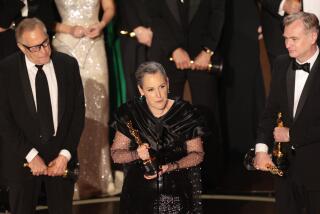
All the best and worst moments of the 2024 Oscars, as they happened
March 10, 2024

The 2024 Oscar winners list

Opinion: ‘Oppenheimer’s’ best performance — reminding us that we live in dangerous times
March 6, 2024
Sign up for our Book Club newsletter
Get the latest news, events and more from the Los Angeles Times Book Club, and help us get L.A. reading and talking.
You may occasionally receive promotional content from the Los Angeles Times.
More From the Los Angeles Times

How the creators of HBO’s ‘The Sympathizer’ explore the ‘American War’ through a Vietnamese lens

Valentina, Justin Torres and more on the Latinidad Stage at the L.A. Times Festival of Books
April 10, 2024

The week’s bestselling books, April 14

The 50 best Hollywood books of all time
April 8, 2024
J. Robert Oppenheimer
Physicist J. Robert Oppenheimer is often called the “father of the atomic bomb” for leading the Manhattan Project, the program that developed the first nuclear weapon during World War II.
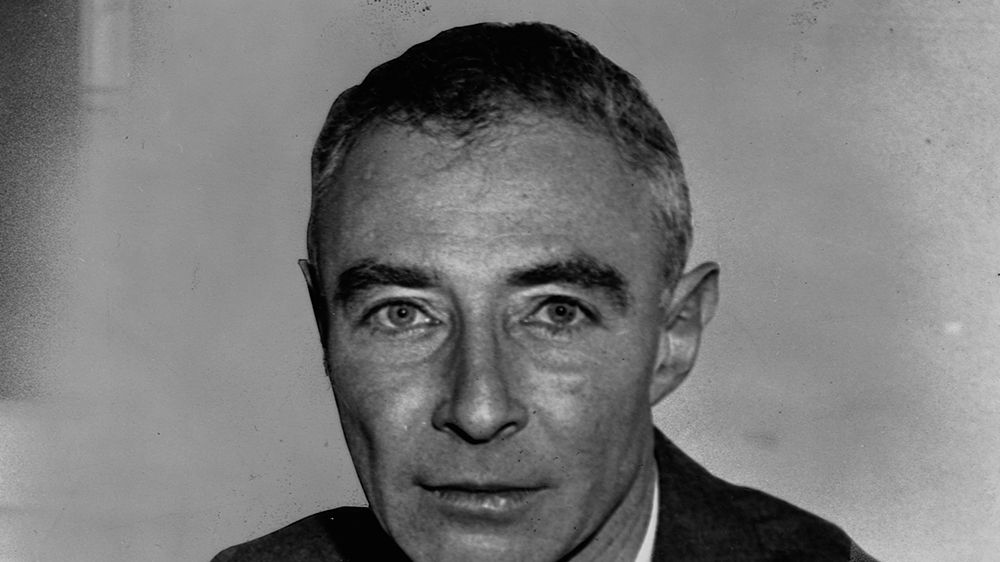
We may earn commission from links on this page, but we only recommend products we back.
Latest News: Oppenheimer Movie Wins 2024 Golden Globe for Best Drama Motion Picture
On January 7, producer Emma Thomas accepted the 2024 Golden Globe for Best Motion Picture - Drama for Oppenheimer , the 2023 biopic which explores the life of famed physicist J. Robert Oppenheimer and his role in the development of the atomic bomb through the Manhattan Project.
The summer blockbuster put the little-known yet highly influential scientist on the map as it grossed more than $950 million at the global box office. You can rent or purchase Oppenheimer on Amazon Prime Video , Apple TV+ , the Google Play store , Vudu , or YouTube . It’s expected to eventually stream on Peacock , though no plans have been announced.
Watch Oppenheimer on Amazon Prime Video , Apple TV+ , or Vudu .
Quick Facts
Early life, education, and professorships, the manhattan project, life after the atomic bomb, relationship with jean tatlock, wife and children, oppenheimer in movies and tv, who was j. robert oppenheimer.
Physicist J. Robert Oppenheimer served as director of the Los Alamos Laboratory during the development of the atomic bomb. After the 1939 invasion of Poland by Nazi Germany, Oppenheimer was selected to administer a laboratory to carry out the Manhattan Project, the program that developed the first nuclear weapon during World War II. After resigning from his post in 1945, he became the chairman of the General Advisory Committee of the Atomic Energy Commission. Prior to John F. Kennedy ’s assassination in 1963, the president announced Oppenheimer would receive the Enrico Fermi Award for his achievements in physics. President Lyndon B. Johnson presented him the award that December. The “Father of the Atomic Bomb” died from cancer at the age of 62 in 1967.
FULL NAME: Julius Robert Oppenheimer BORN: April 22, 1904 DIED: February 18, 1967 BIRTHPLACE: New York, New York SPOUSE: Katherine “Kitty” Oppenheimer (1940-1967) CHILDREN: Peter and Katherine ASTROLOGICAL SIGN: Taurus
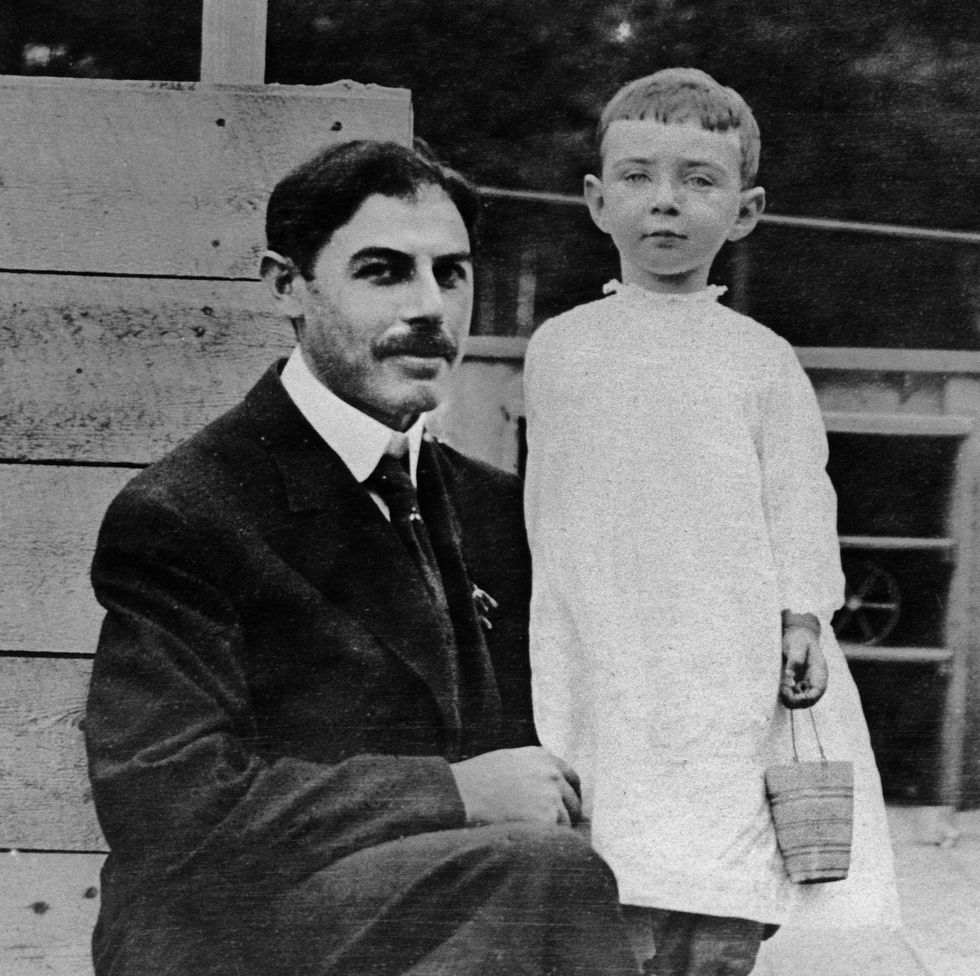
Julius Robert Oppenheimer was born on April 22, 1904, in New York City. His German Jewish parents were Julius Oppenheimer, a rich textile importer, and Ella (née Friedman), a painter. Both were immigrants.
After graduating from Harvard University, Oppenheimer sailed to England and enrolled at the University of Cambridge, where he began his atomic research at the Cavendish Laboratory in 1925. Oppenheimer experienced bouts of depression throughout his life, telling his brother Frank: “It is occasionally true that I need physics more than friends.”
Oppenheimer was miserable at Cambridge and found laboratory work uninteresting, preferring theoretical physics rather than experimental, according to American Prometheus: The Triumph and Tragedy of J. Robert Oppenheimer by Kai Bird and Martin J. Sherwin. Oppenheimer had such a poor relationship with his Cambridge tutor, Patrick Blackett, that at one point Oppenheimer left an apple doused with noxious chemicals on Blackett’s desk, according to J. Robert Oppenheimer: A Life by Abraham Pais and Robert P. Crease. Blackett wasn’t harmed, and Oppenheimer avoided discipline only with the intervention of his parents.
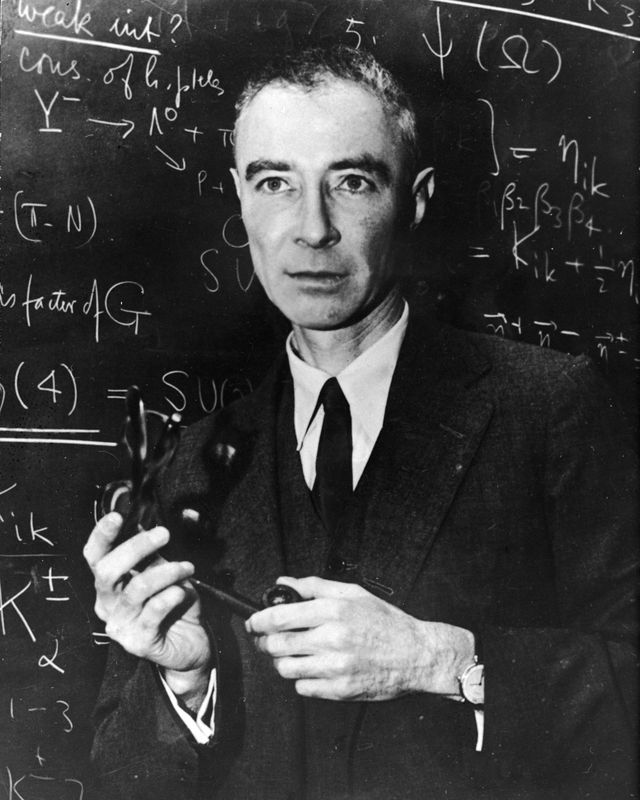
In 1926, he teamed with Max Born at Göttingen University, where he met a host of prominent physicists, including Niels Bohr . He received his doctorate at Göttingen while also developing what became known as the Born-Oppenheimer approximation, an important contribution to quantum molecular theory.
Oppenheimer held teaching positions at the University of California, Berkeley, and the California Institute of Technology, and did important research in such fields at theoretical astronomy, nuclear physics, quantum electrodynamics, and more, according to A Biographical Encyclopedia of Scientists and Inventors in American Film and TV Since 1930 by A. Bowdoin Van Riper.
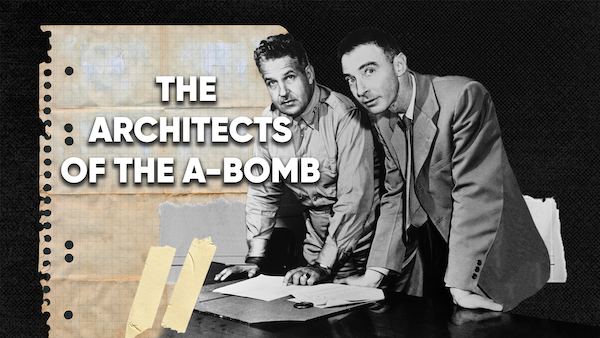
Oppenheimer became politically active in the 1930s and agreed with Albert Einstein and Leo Szilard that the Nazis could develop a nuclear weapon. Following the 1939 invasion of Poland by Nazi Germany, Oppenheimer was selected to administer a laboratory to carry out the Manhattan Project, a U.S. Army experiment aimed at harnessing atomic energy for military purposes.
The choice of Oppenheimer surprised some due to his left-wing politics, lack of leadership experience, and the fact he had never won a Nobel Prize. However, Brigadier General Leslie R. Groves Jr., the director of the Manhattan Project, felt Oppenheimer had an “overweening ambition” that would serve him well in the position, according to Life and Times of the Atomic Bomb by Albert Berger.
Oppenheimer led the scientific end of the Manhattan Project in Los Alamos, New Mexico, beginning in 1942. The project, which grew from a few hundred people to more than 6,000 by 1945, was populated by many scientists who had escaped fascist regimes in Europe, according to American Prometheus . Their mission was to explore a newly documented fission process involving uranium-235, with which they hoped to make a nuclear bomb before Adolf Hitler could develop one. The project was initially allotted $6,000 by the U.S. government, but by the time the work culminated in 1945, the budget had grown to $2 billion.
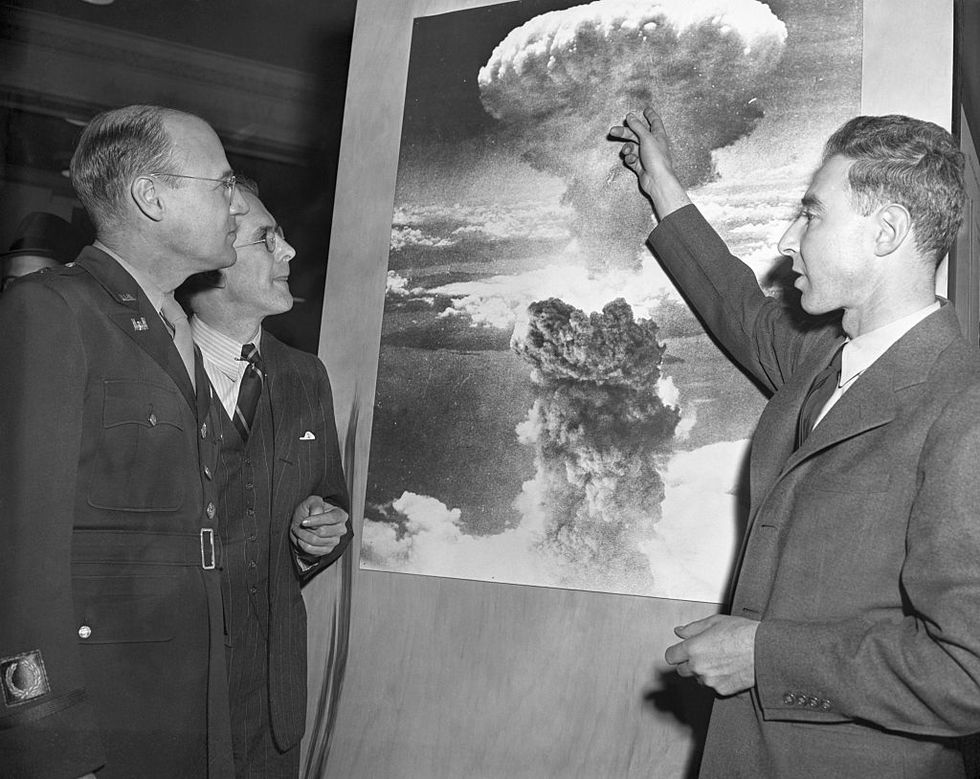
The work of Oppenheimer and his fellow scientists led to the world’s first nuclear explosion in the Jornada del Muerto desert in New Mexico, on July 16, 1945. The detonation was given the code name “Trinity,” inspired by a poem by John Donne . While witnessing the explosion, Oppenheimer recalled a verse from the Bhagavad Gita that read, “If the radiance of a thousand suns were to burst at once into the sky, that would be like the splendor of the mighty one,” according to the book Brighter Than a Thousand Suns: A Personal History of the Atomic Scientists by Robert Jungk. More famously, he later said he also reflected upon another Bhagavad Gita verse: “I am become Death, the destroyer of worlds.”
American Prometheus: The Triumph and Tragedy of J. Robert Oppenheimer

Oppenheimer was initially pleased with the atomic bomb, with physicist Isidor Rabi saying of him: “I’ll never forget his walk; I’ll never forget the way he stepped out of the car. His walk was like High Noon… This kind of strut. He had done it,” according to Robert Oppenheimer: A Life Inside the Center by Ray Monk.
But Oppenheimer’s feelings of elation following Trinity and the bombing of Hiroshima three weeks later changed after the bombing of Nagasaki, which he found unnecessary from a military perspective. During a White House meeting with Harry S. Truman , Oppenheimer famously claimed to have “blood on his hands,” a comment that infuriated the president . Although the Hiroshima and Nagasaki bombings effectively ended World War II, the weapons’s devastation prompted Oppenheimer to argue against its further development, and he resigned from his post that same year. Ultimately, his work for the Manhattan Project earned him the enduring nickname “father of the atomic bomb.”
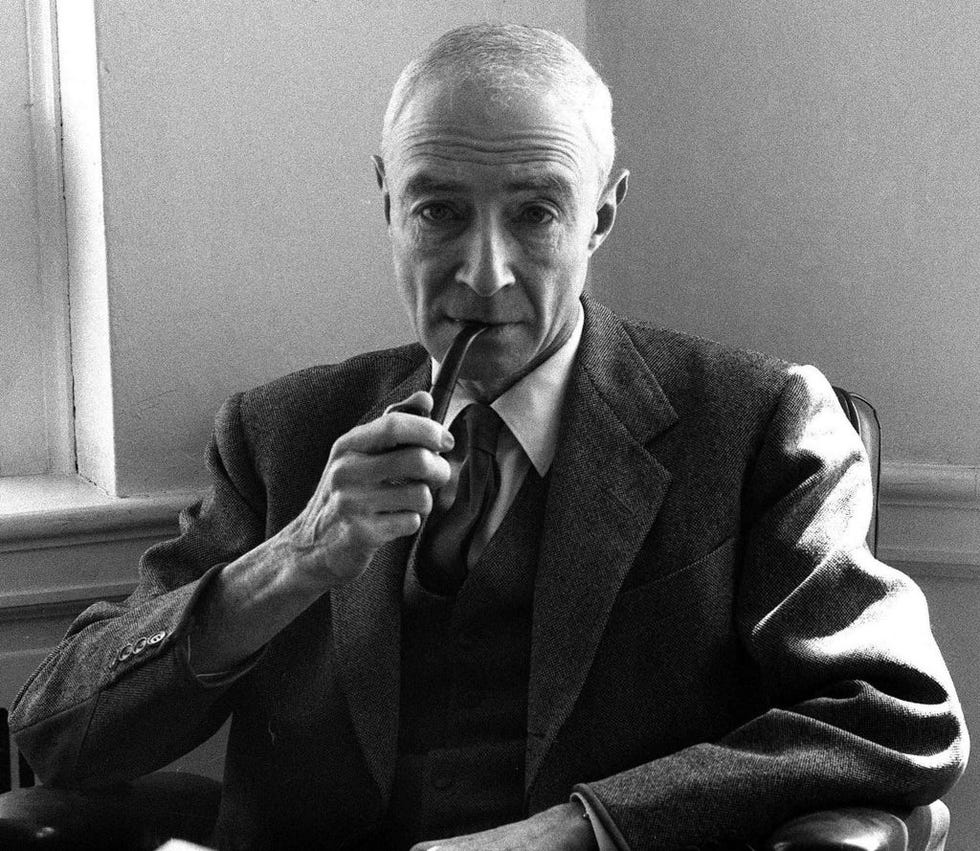
The Manhattan Project was top secret until after the bombings of Hiroshima and Nagasaki, when Oppenheimer became a household name. He returned to the California Institute of Technology but found he had little desire to each anymore. He went on to become chairman of the General Advisory Committee of the Atomic Energy Commission (AEC). The Soviet Union’s first atomic bomb test in 1949 came earlier than Americans had expected, increasing pressure for the United States to develop the more powerful hydrogen bomb, but Oppenheimer opposed this for practical and ethnical reasons, according to American Prometheus . Truman, however, decided to press forward with the weapon’s development anyway.
Oppenheimer’s shocking opposition to the bomb led to accusations that he was a Communist supporter. In 1954, the AEC held a security hearing regarding Oppenheimer, during which he was suspended from secret nuclear research and stripped of his security clearance. This served as a personal and professional humiliation for Oppenheimer, effectively ending his role in government and policy.
However, his reputation was partially rehabilitated in 1963, when President John F. Kennedy announced Oppenheimer would receive the Enrico Fermi Award, according to J. Robert Oppenheimer and the American Century by David Cassidy. After Kennedy’s assassination , President Lyndon B. Johnson presented the award to Oppenheimer that December.
Oppenheimer continued to support international control of atomic energy in his later years.
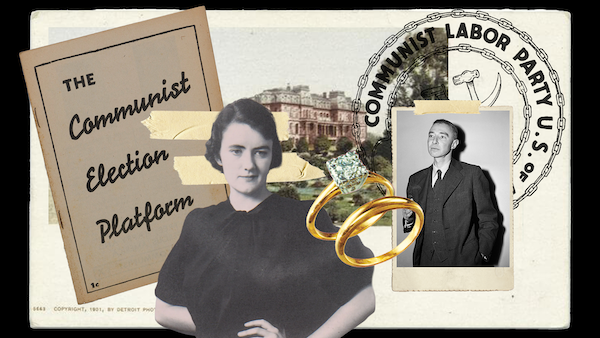
Oppenheimer was known for his romantic relationship with Jean Tatlock , a graduate student at the University of California, Berkeley, while Oppenheimer was a young physics professor there. Tatlock is credited with introducing Oppenheimer to radical communist politics, something that haunted him later in his career. Although Oppenheimer felt passionately toward Tatlock and reportedly proposed to her twice, they broke up before Oppenheimer joined the Manhattan Project, and Tatlock died by suicide in January 1944.
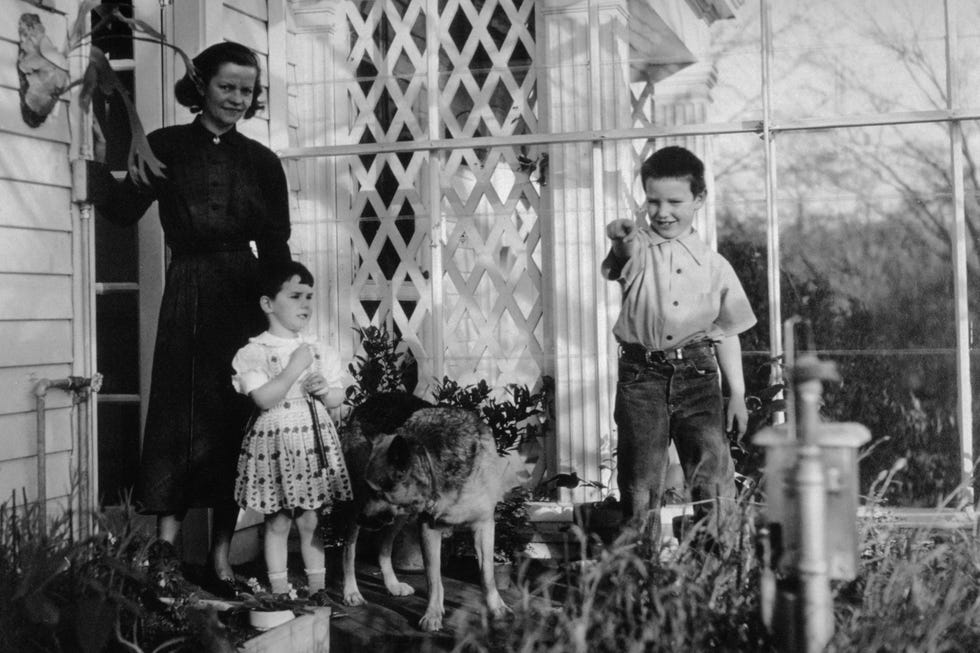
In 1939, Oppenheimer met Katherine “Kitty” Puening, a Berkeley student who also had communist ties. The two married in 1940, and they had two children: Peter, who was born in 1941, and Katherine “Toni,” who was born in 1944.
Working as a biologist and botanist, Kitty became an alcoholic after her husband became a celebrity for his role in the Manhattan Project, according to American Prometheus . Kitty died of an embolism in 1972 years after Oppenheimer’s own death.
A chain smoker, Oppenheimer died of throat cancer on February 18, 1967, in Princeton, New Jersey.
In December 2022, 55 years after Oppenheimer’s death, U.S. Energy Secretary Jennifer Granholm nullified the 1954 decision to revoke his national security clearance.
Oppenheimer has been portrayed in several films, plays, and other works of media. A BBC television serial Oppenheimer was released in 1980, starring Sam Waterston as the famed physicist. It won three BAFTA Television Awards. That year also saw the release of The Day After Trinity , a documentary about Oppenheimer and the development of the atomic bomb. The film was nominated for an Academy Award for Best Documentary Feature and won a Peabody Award.
Dwight Schultz portrayed Oppenheimer in the film Fat Man and Little Boy (1989), and David Strathairn played him in the television movie Day One , also released in 1989. Filmmaker Christopher Nolan directs 2023’s Oppenheimer movie, in which Cillian Murphy plays the famed physicist.
- I am become Death, the destroyer of worlds.
- If the radiance of a thousand suns were to burst at once into the sky, that would be like the splendor of the mighty one.
- Mr. President, I feel I have blood on my hands.
Fact Check: We strive for accuracy and fairness. If you see something that doesn’t look right, contact us !
The Biography.com staff is a team of people-obsessed and news-hungry editors with decades of collective experience. We have worked as daily newspaper reporters, major national magazine editors, and as editors-in-chief of regional media publications. Among our ranks are book authors and award-winning journalists. Our staff also works with freelance writers, researchers, and other contributors to produce the smart, compelling profiles and articles you see on our site. To meet the team, visit our About Us page: https://www.biography.com/about/a43602329/about-us
Colin McEvoy joined the Biography.com staff in 2023, and before that had spent 16 years as a journalist, writer, and communications professional. He is the author of two true crime books: Love Me or Else and Fatal Jealousy . He is also an avid film buff, reader, and lover of great stories.
Famous Scientists

Jane Goodall

Marie Curie
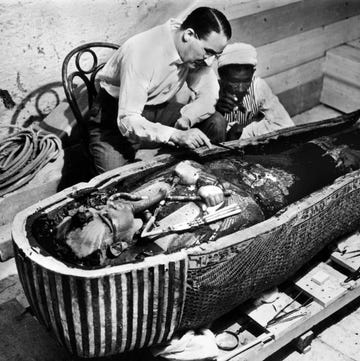
Howard Carter, King Tut's Tomb, and a Deadly Curse

Benjamin Banneker
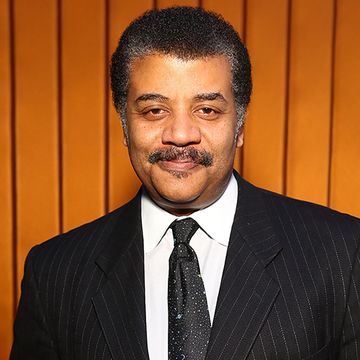
Neil deGrasse Tyson
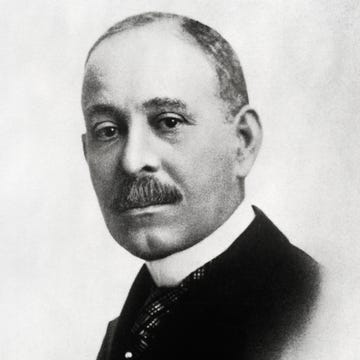
Daniel Hale Williams

Patricia Bath

Mae Jemison

George Washington Carver
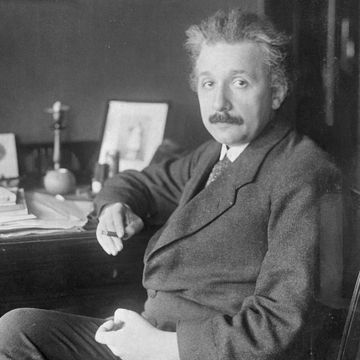
Albert Einstein’s Role in the Atomic Bomb
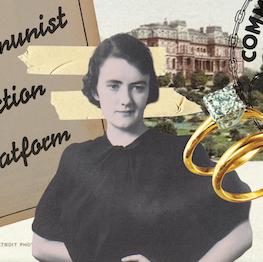
Jean Tatlock: The Woman Oppenheimer Loved
The Book That Inspired Christopher Nolan's Oppenheimer
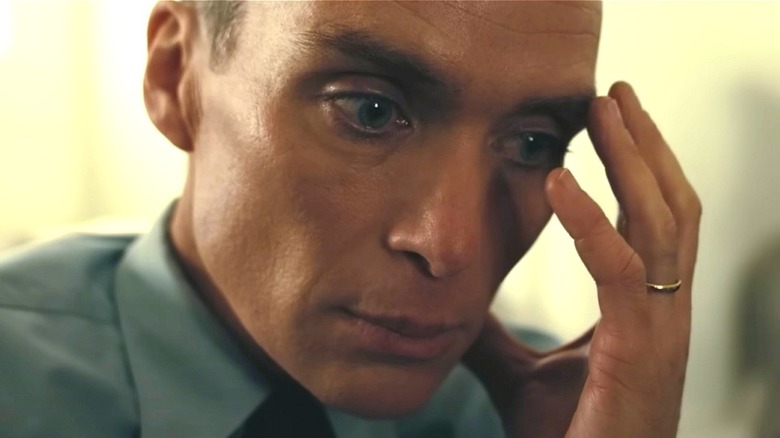
Since James Cameron's hiatus is officially at an end as of the visually stunning "Avatar: The Way of Water" hitting theaters, a return to high-quality blockbuster filmmaking may well be underway. While Marvel has effectively dominated the cinematic world for a decade now, auteurs like Cameron are still plugging away at passion projects capable of rivaling these Marvel movies in scale. Now, film buffs can look forward to fellow blockbuster auteur Christopher Nolan's first release since the latter half of 2020. The innovative mind behind films like "Memento" and most recently "Tenet," Nolan will soon return to theaters with the story of one of World War 2's most famous scientific personalities in "Oppenheimer." Cillian Murphy stars the as real-life historical figure J. Robert Oppenheimer, whose name viewers should recognize as that of the man who helped invent the atomic bomb.
Nolan, notably, has stayed true to his brand by depicting a nuclear explosion without the help of CGI for his latest project. That said, on top of this and other such creative choices, it's worth keeping in mind that Nolan is largely adapting true events. In fact, beyond the real-world history that serves as film's basis, Nolan is sourcing the telling of his principal character's story from a nonfiction book that helped popularize the subject in the present day zeitgeist.
Oppenheimer is based on a pulitzer-winning book
Shortly after the first trailer for "Oppenheimer" premiered, Variety cited a thoroughly-researched and heavily-detailed biography titled "American Prometheus: The Triumph and Tragedy of J. Robert Oppenheimer" as the film's source material. Written by Kai Bird and Martin J. Sherwin, this book won a 2006 Pulitzer Prize in the biography category for its in-depth analysis of both Oppenheimer's contribution to the creation of the atomic bomb and his disapproval of its successor in the hydrogen bomb.
Based on the first "Oppenheimer" trailer , Nolan seems to be utilizing his literary source to great effect. In a voiceover, for example, Oppenheimer vocalizes his trepidation over harnessing the atomic bomb's power, as "American Prometheus" makes a point to highlight. The trailer also includes shots of him deposed at a hearing, which appears to be based on the book's account of FBI Director J. Edgar Hoover barring Oppenheimer from learning some of America's nuclear secrets. The notorious moral quandary over Oppenheimer's role in World War 2 will most certainly lie at the center of this film, making the analysis of this subject in "American Prometheus" core not just to its story but its point-of-view as well.
Nolan's Oppenheimer may differ from American Prometheus in one key way
On May 8, 2023, Universal Pictures released a roughly three-minute long trailer for "Oppenheimer," providing viewers with their closest look at the film yet prior to its July 21 premiere. As with its prior trailer, this preview focuses almost exclusively on J. Robert Oppenheimer's relationship to his work on the atomic bomb. "American Prometheus: The Triumph and Tragedy of J. Robert Oppenheimer," notably, is more than 700 pages long, and attempts to paint as comprehensive a picture of its subject as possible, detailing significant episodes in his life surrounding the work for which he's become most well known, rather than merely chronicling his atomic bomb research.
Nolan's "Oppenheimer," then, doesn't appear to be a comprehensive adaptation of "American Prometheus," but a film about its titular scientist's sizable role in world history, based on the sections of the book focused directly on this pivotal time in his life. That said, Nolan is frequently a surprising filmmaker, leaving the possibility plenty open that "Oppenheimer" might subvert its audience's expectations to some degree at the time of its full release.
The Book Behind ‘Oppenheimer’ Tops Bestseller Lists as Christopher Nolan Film Opens
"American Prometheus," which won the Pulitzer Prize for literature in 2005, is back on the charts
By Anna Tingley
Anna Tingley
- How to Watch ‘The People vs. O.J. Simpson’ Online 3 hours ago
- How to Watch the 2024 Masters Live Online 4 hours ago
- The Best Eco-Friendly Products to Gift in 2024 1 day ago

If you purchase an independently reviewed product or service through a link on our website, Variety may receive an affiliate commission.
It was in 2021 that Christopher Nolan first read “American Prometheus: The Triumph and Tragedy of J. Robert Oppenheimer,” Martin Sherwin and Kai Bird’s sweeping biography about the physicist dubbed the father of the atomic bomb. As Nolan is known for his epic and often extreme films, it makes sense that the prolific director was determined to adapt the explosive story, which had been optioned numerous times in Hollywood but never made it past development.
Two years later and Nolan’s “ Oppenheimer ,” one of the most anticipated films of the year, is finally out.
Popular on Variety
The narrative takes a dramatic turn with the onset of World War II, when Oppenheimer was appointed as the scientific director of the Manhattan Project, a top-secret government initiative aimed at developing the first atomic bomb. His leadership and organizational skills were instrumental to the project, which culminated with the devastating nuclear weapons dropped on Hiroshima and Nagasaki, killing over 200,000 Japanese people.
When Bird read Nolan’s screenplay , he was “struck by how faithful it was to the book, capturing what was always most important to Sherwin: the paradoxes at the heart of Oppenheimer’s character and the intimate details that dovetailed with enormous plate shifts of world history.”
Purchase “American Prometheus: The Triumph and Tragedy of J. Robert Oppenheimer” below:
American Prometheus: The Triumph and Tragedy of J. Robert Oppenheimer $50.00 $31.49 Buy Now On Amazon
More From Our Brands
Suki waterhouse drops two new singles ahead of coachella set, a copernicus book from 1543 could fetch $1.5 million at auction, mizuhara charged with bank fraud, feds say ohtani is cooperating, the best loofahs and body scrubbers, according to dermatologists, tvline items: dave bautista joins avatar: the last airbender movie, meghan markle’s new shows and more, verify it's you, please log in.
- Skip to main content
- Keyboard shortcuts for audio player
State of the World from NPR
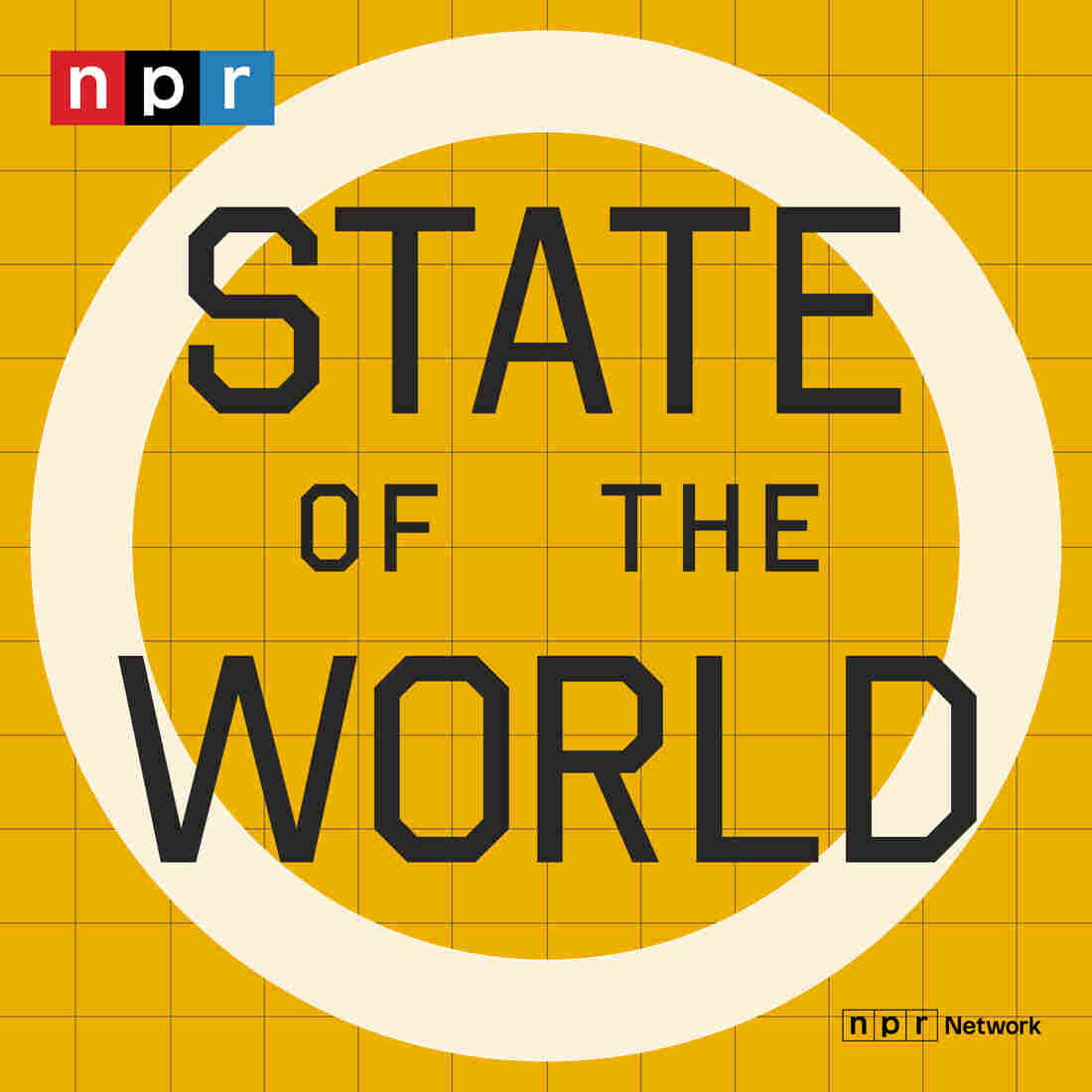
- LISTEN & FOLLOW
- Apple Podcasts
- Google Podcasts
- Amazon Music
Your support helps make our show possible and unlocks access to our sponsor-free feed.
How is the Movie "Oppenheimer" Being Received in Japan?

Anthony Kuhn

People walk by a poster to promote the movie "Oppenheimer" Friday, March 29, 2024, in Tokyo. "Oppenheimer" finally premiered in the nation where two cities were obliterated 79 years ago by the nuclear weapons invented by the American scientist who was the subject of the Oscar-winning film. Japanese filmgoers' reactions understandably were mixed and highly emotional. Eugene Hoshiko/AP hide caption
People walk by a poster to promote the movie "Oppenheimer" Friday, March 29, 2024, in Tokyo. "Oppenheimer" finally premiered in the nation where two cities were obliterated 79 years ago by the nuclear weapons invented by the American scientist who was the subject of the Oscar-winning film. Japanese filmgoers' reactions understandably were mixed and highly emotional.
Understandably, a movie about the man who steered the development of atomic bombs is seen differently in a country where some 200,000 people were killed by those bombs. "Oppenheimer" opened in Japan 8 months after premiering in the U.S. Our reporter talks to movie goers in Nagasaki, Japan.

Writer and Journalist Mark Oppenheimer to join Danforth Center on Religion and Politics

The John C. Danforth Center on Religion and Politics at Washington University in St. Louis is pleased to welcome Mark Oppenheimer, who will join the Center as Professor of Practice and Executive Editor of Religion & Politics .
Oppenheimer will join the Center on May 28, 2024, and will restart the Center’s online journal , which went on hiatus in May 2023. Religion & Politics was founded in 2012 as a public project of the John C. Danforth Center on Religion and Politics at Washington University in St. Louis. Oppenheimer will also participate in a range of Center events, as well as teach courses on journalism and religion for Washington University undergraduate students.
“Among well-known writers who cover religion in America today, Mark Oppenheimer has stood out for his eloquence, intelligence, and empathy,” noted Mark Valeri, the Rev. Priscilla Wood Neaves Professor of Religion and Politics and Director of the John C. Danforth Center on Religion and Politics. “We are delighted that he will join our Center, and look forward to working with him as he shapes Religion & Politics , teaches our undergraduates, and helps us to expand the public-facing dimensions of our scholarship.”

Mark Oppenheimer holds a Ph.D. in religious studies from Yale, and has taught at Stanford, Wesleyan, Wellesley, NYU, Boston College, and Yale, where he was the founding director of the Yale Journalism Initiative. From 2010 to 2016, he wrote the “Beliefs” column, about religion, for The New York Times , and he has also written for publications including The New Yorker, The Nation, GQ, Slate, The Wall Street Journal, and many more. He created Unorthodox , the world’s most popular podcast about Jewish life and culture, with over 7 million downloads to date. More recently, he hosted an eight-part podcast called Gatecrashers , about the history of Jews and antisemitism at Ivy League schools. He is the author of five books, including The Newish Jewish Encyclopedia and, most recently, Squirrel Hill: The Tree of Life Synagogue Shooting and the Soul of a Neighborhood . He is currently working on a biography of children’s author Judy Blume.
“In its decade of publishing, Religion & Politics became the go-to source for thoughtful commentary and reporting about American religious and political life. The chance to bring it back from hiatus, and continue the great tradition its editors started, is too good to pass up—as is the chance to work with, and learn from, WashU’s amazingly talented faculty and students. I am really thrilled,” said Oppenheimer.
The John C. Danforth Center on Religion and Politics was established in 2010 at Washington University in St. Louis. The Center serves as an open venue for fostering rigorous scholarship and informing broad academic and public communities about the intersections of religion and U.S. politics. The Center offers undergraduate courses and a minor in religion and politics, as well as a vibrant public event program.
For more information about the John C. Danforth Center on Religion and Politics at Washington University in St. Louis, visit the website at http://rap.wustl.edu or contact Debra Kennard at 314-935-7790.

IMAGES
COMMENTS
THE INSPIRATION FOR THE ACADEMY AWARD®-WINNING MAJOR MOTION PICTURE OPPENHEIMER • "A riveting account of one of history's most essential and paradoxical figures."—Christopher Nolan #1 NEW YORK TIMES BESTSELLER • PULITZER PRIZE WINNER • The definitive biography of J. Robert Oppenheimer, one of the iconic figures of the twentieth century, a brilliant physicist who led the effort to ...
A 1963 portrait of J. Robert Oppenheimer, the subject of the biography "American Prometheus" and a new film based on the book. Eddie Adams/Associated Press. Martin Sherwin was hardly your ...
By Ray Monk. Illustrated. 825 pp. Doubleday. $37.50. George Johnson is the author of "Strange Beauty," a biography of the physicist Murray Gell-Mann. His book "The Cancer Chronicles ...
American Prometheus is the first full-scale biography of J. Robert Oppenheimer, "father of the atomic bomb," the brilliant, charismatic physicist who led the effort to capture the awesome fire of the sun for his country in time of war. ... Hiroshima and Its Legacies, which won the Stuart L. Bernath Prize, as well as the American History Book ...
American Prometheus is the first full-scale biography of J. Robert Oppenheimer, "father of the atomic bomb," the brilliant, charismatic physicist who led the effort to capture the awesome fire of the sun for his country in time of war. Immediately after Hiroshima, he became the most famous scientist of his generation-one of the iconic figures of the twentieth century, the embodiment of modern ...
American Prometheus: The Triumph and Tragedy of J. Robert Oppenheimer is a 2005 biography of theoretical physicist J. Robert Oppenheimer, the leader of the Manhattan Project which produced the first nuclear weapons, written by Kai Bird and Martin J. Sherwin over a period of 25 years. It won numerous awards, including the 2006 Pulitzer Prize for Biography or Autobiography.
Oppenheimer wed the already-pregnant Puening on Nov. 1, 1940, shortly after she divorced her third husband, Richard Stewart Harrison. The Oppenheimers' first child, Peter, was born in May 1941 ...
Notes From Your Bookseller. In a dazzling feat of biography, history, science and politics, Kai Bird and Martin J. Sherwin tell the extraordinary story of Robert Oppenheimer — physicist, Director of Los Alamos, "father of the atomic bomb," colleague to Enrico Fermi and Albert Einstein, and victim of McCarthy's House Un-American Activities Committee.
American Prometheus : the triumph and tragedy of J. Robert Oppenheimer ... This book is both biography and history, significant to our understanding of our recent past--and of our choices for the future Access-restricted-item true Addeddate 2011-04-07 18:15:08 ...
J. Robert Oppenheimer (born April 22, 1904, New York, New York, U.S.—died February 18, 1967, Princeton, New Jersey) was an American theoretical physicist and science administrator, noted as director of the Los Alamos Laboratory (1943-45) during development of the atomic bomb and as director of the Institute for Advanced Study, Princeton ...
J. Robert Oppenheimer (born Julius Robert Oppenheimer; / ˈ ɒ p ən h aɪ m ər / OP-ən-hy-mər; April 22, 1904 - February 18, 1967) was an American theoretical physicist.He was director of the Manhattan Project's Los Alamos Laboratory during World War II and is often called the "father of the atomic bomb".. Born in New York City, Oppenheimer earned a bachelor of arts degree in chemistry ...
The General and the Genius: Groves and Oppenheimer - The Unlikely Partnership that Built the Atom Bomb. Now 23% Off. $15 at Amazon. In this dual biography of Graves and Oppenheimer, James Kunetka ...
Robert Oppenheimer was wrongly stripped of security clearance, U.S. says. Dec. 17, 2022. But by the late 1990s, nearly 20 years behind schedule on his book, Sherwin's attitude toward the project ...
Physicist J. Robert Oppenheimer is often called the "father of the atomic bomb" for leading the Manhattan Project, the program that developed the first nuclear weapon during World War II.
Written by Kai Bird and Martin J. Sherwin, this book won a 2006 Pulitzer Prize in the biography category for its in-depth analysis of both Oppenheimer's contribution to the creation of the atomic ...
The Book Behind 'Oppenheimer' Tops Bestseller Lists as Christopher Nolan Film Opens ... pulls straight from the 700-page biography, which traces Oppenheimer's life starting with his time at ...
American Prometheus: The Triumph and Tragedy of J. Robert Oppenheimer. This bestselling, Pulitzer Prize-winning biography inspired the major motion picture, and this literary feat delivers a riveting look at Robert Oppenheimer's life and his efforts to build the atomic bomb. One of our booksellers, Sallye L, describes the book as "An epic ...
People walk by a poster to promote the movie "Oppenheimer" Friday, March 29, 2024, in Tokyo. "Oppenheimer" finally premiered in the nation where two cities were obliterated 79 years ago by the ...
Mark Oppenheimer holds a Ph.D. in religious studies from Yale, and has taught at Stanford, Wesleyan, Wellesley, NYU, Boston College, and Yale, where he was the founding director of the Yale Journalism Initiative.From 2010 to 2016, he wrote the "Beliefs" column, about religion, for The New York Times, and he has also written for publications including The New Yorker, The Nation, GQ, Slate ...